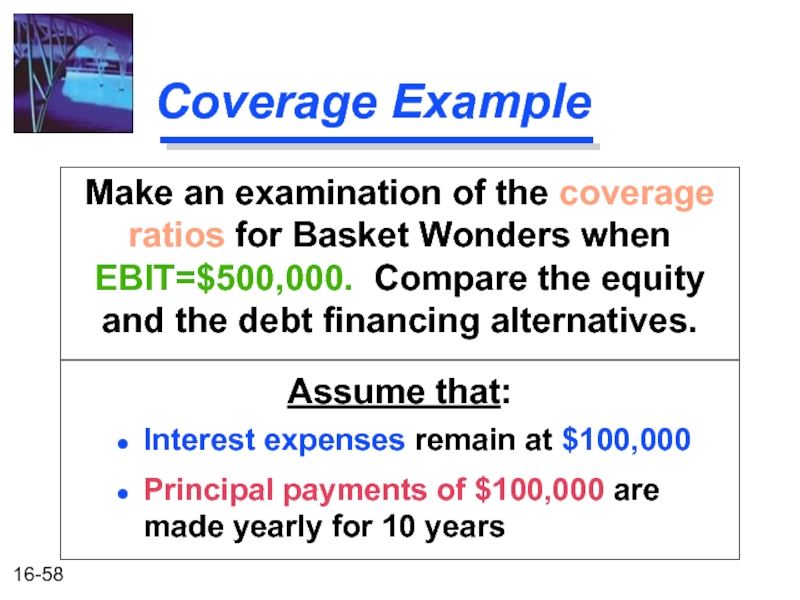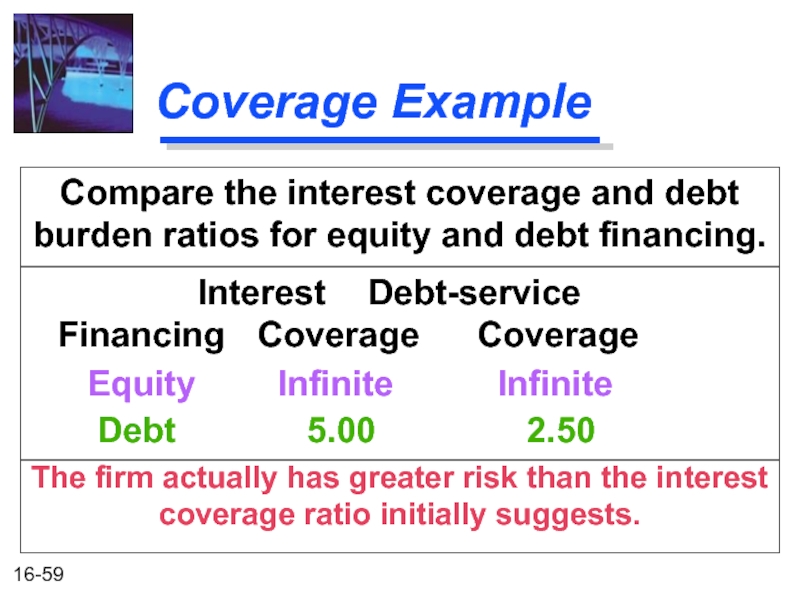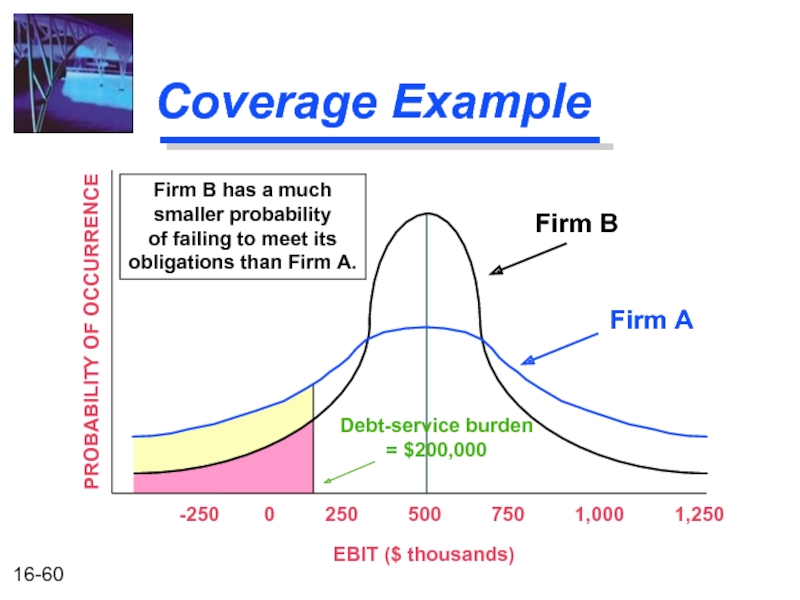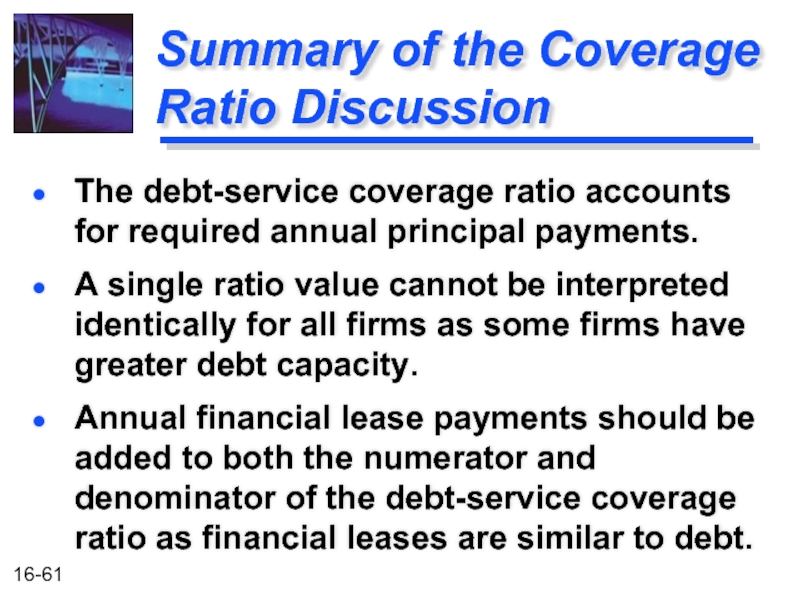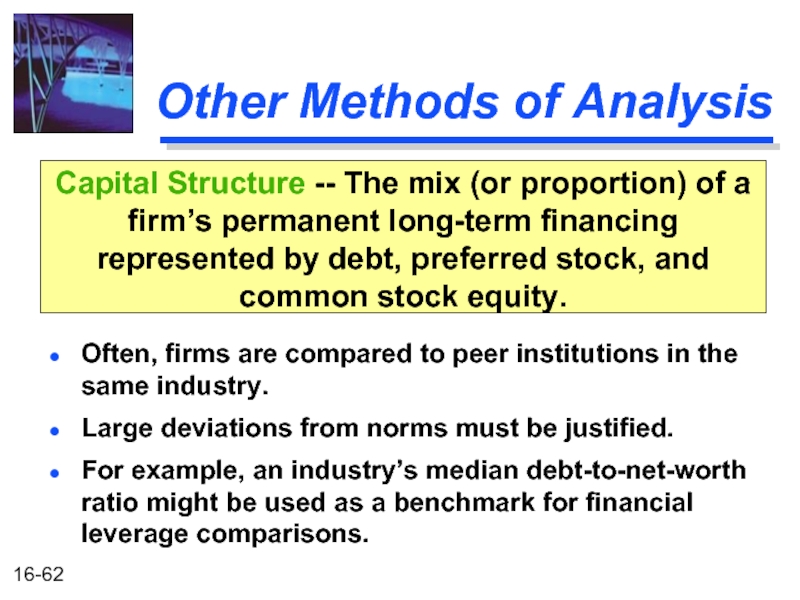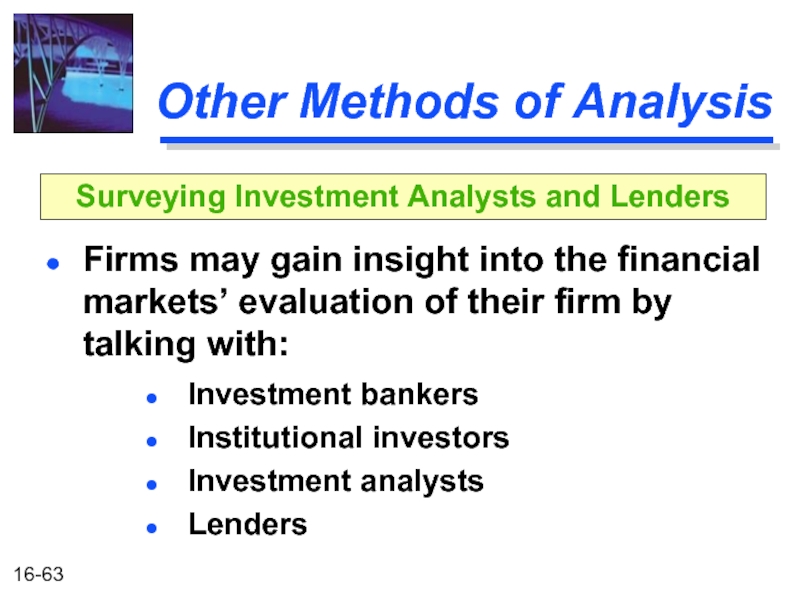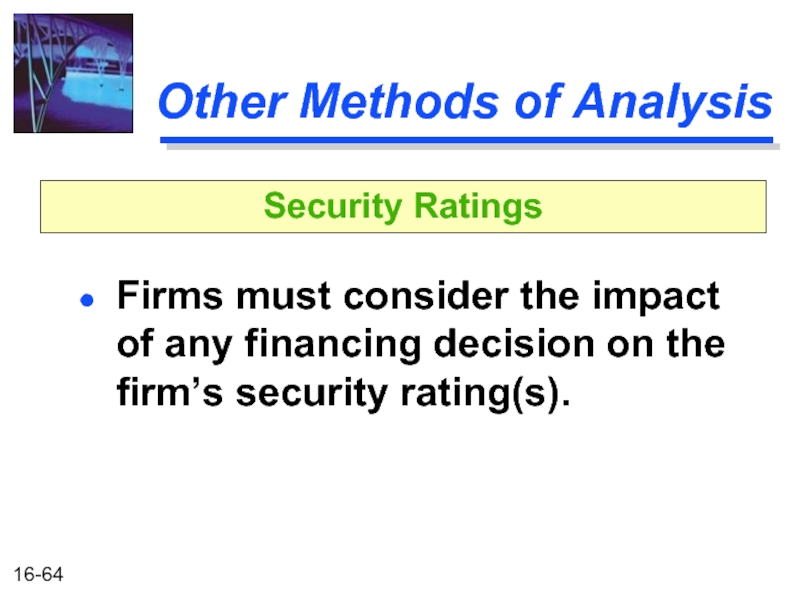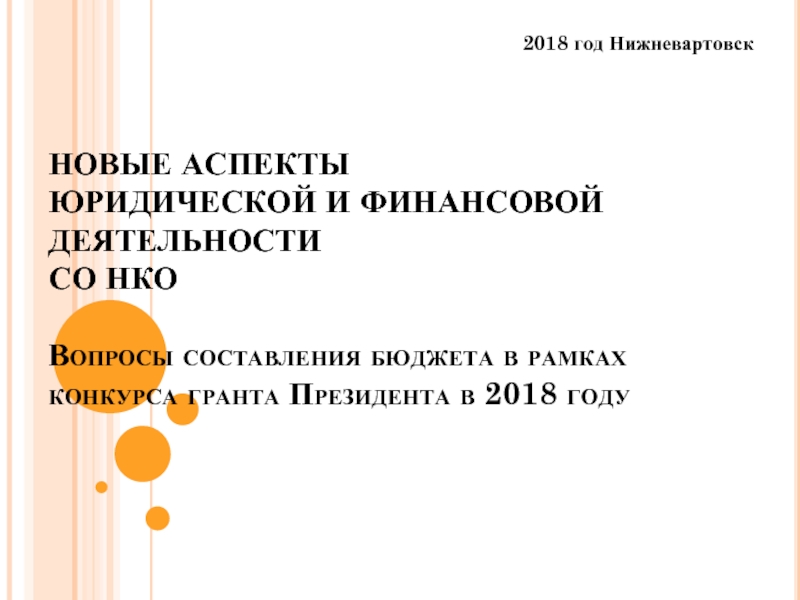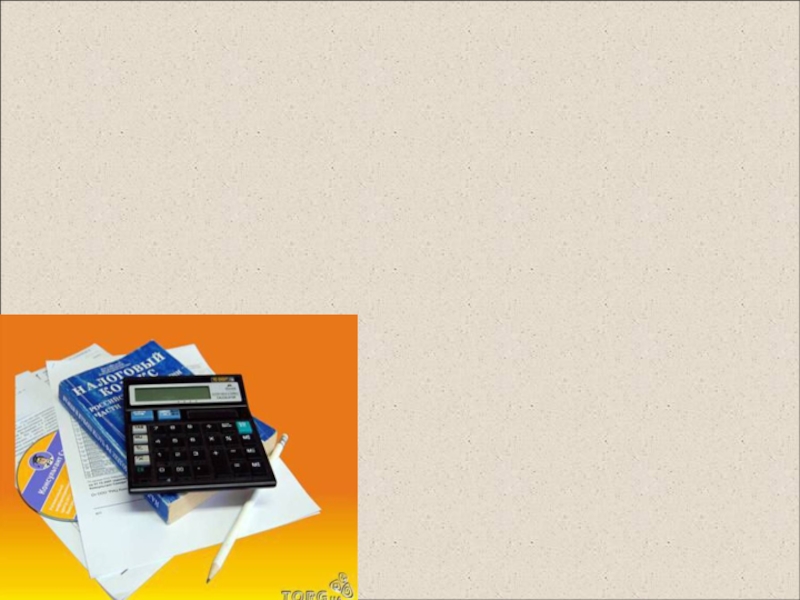- Главная
- Разное
- Дизайн
- Бизнес и предпринимательство
- Аналитика
- Образование
- Развлечения
- Красота и здоровье
- Финансы
- Государство
- Путешествия
- Спорт
- Недвижимость
- Армия
- Графика
- Культурология
- Еда и кулинария
- Лингвистика
- Английский язык
- Астрономия
- Алгебра
- Биология
- География
- Детские презентации
- Информатика
- История
- Литература
- Маркетинг
- Математика
- Медицина
- Менеджмент
- Музыка
- МХК
- Немецкий язык
- ОБЖ
- Обществознание
- Окружающий мир
- Педагогика
- Русский язык
- Технология
- Физика
- Философия
- Химия
- Шаблоны, картинки для презентаций
- Экология
- Экономика
- Юриспруденция
Operating and Financial Leverage презентация
Содержание
- 1. Operating and Financial Leverage
- 2. After studying Chapter 16, you should be
- 3. Operating and Financial Leverage Operating Leverage Financial
- 4. Operating Leverage One potential “effect” caused by
- 5. Impact of Operating Leverage on Profits
- 6. Impact of Operating Leverage on Profits
- 7. Impact of Operating Leverage on Profits
- 8. Impact of Operating Leverage on Profits Firm
- 9. Break-Even Analysis When studying operating leverage, “profits”
- 10. Break-Even Chart QUANTITY PRODUCED AND
- 11. Break-Even (Quantity) Point How to find
- 12. Break-Even (Quantity) Point Breakeven occurs when
- 13. Break-Even (Sales) Point How to
- 14. Break-Even Point Example Basket Wonders (BW)
- 15. Break-Even Point (s) Breakeven occurs
- 16. Break-Even Chart QUANTITY PRODUCED AND
- 17. Degree of Operating Leverage (DOL) DOL at
- 18. Computing the DOL DOLQ units Calculating the
- 19. Computing the DOL DOLS dollars of sales
- 20. Break-Even Point Example Lisa Miller wants
- 21. Computing BW’s DOL DOL6,000 units Computation based
- 22. Interpretation of the DOL A 1% increase
- 23. Interpretation of the DOL
- 24. Interpretation of the DOL DOL is a
- 25. DOL and Business Risk DOL is only
- 26. Application of DOL for Our Three Firm
- 27. Application of DOL for Our Three Firm
- 28. Application of DOL for Our Three-Firm Example
- 29. Application of DOL for Our Three-Firm Example
- 30. Financial Leverage Financial leverage is acquired by
- 31. EBIT-EPS Break-Even, or Indifference, Analysis Calculate EPS
- 32. EBIT-EPS Chart Current common equity
- 33. EBIT-EPS Calculation with New Equity Financing
- 34. EBIT-EPS Chart 0
- 35. EBIT-EPS Calculation with New Debt Financing
- 36. EBIT-EPS Chart 0
- 37. EBIT-EPS Calculation with New Preferred Financing
- 38. 0 100
- 39. What About Risk? 0
- 40. What About Risk? 0
- 41. Degree of Financial Leverage (DFL) DFL at
- 42. Computing the DFL DFL EBIT of $X
- 43. What is the DFL for Each of
- 44. What is the DFL for Each of
- 45. What is the DFL for Each of
- 46. Variability of EPS Preferred stock financing will
- 47. Financial Risk Debt increases the probability of
- 48. Total Firm Risk CVEPS is a
- 49. Degree of Total Leverage (DTL) DTL at
- 50. Computing the DTL DTL S dollars of
- 51. DTL Example Lisa Miller wants to
- 52. Computing the DTL for All-Equity Financing
- 53. Computing the DTL for Debt Financing
- 54. Risk versus Return Compare the expected EPS
- 55. What is an Appropriate Amount of
- 56. Coverage Ratios Interest Coverage EBIT Interest
- 57. Coverage Ratios Debt-service Coverage EBIT {
- 58. Coverage Example Make an examination of the
- 59. Coverage Example Compare the interest coverage and
- 60. Coverage Example -250
- 61. Summary of the Coverage Ratio Discussion A
- 62. Other Methods of Analysis Often, firms are
- 63. Other Methods of Analysis Firms may gain
- 64. Other Methods of Analysis Firms must consider
Слайд 2After studying Chapter 16, you should be able to:
Define operating and
Calculate a firm’s operating break-even (quantity) point and break-even (sales) point .
Define, calculate, and interpret a firm's degree of operating, financial, and total leverage.
Understand EBIT-EPS break-even, or indifference, analysis, and construct and interpret an EBIT-EPS chart.
Define, discuss, and quantify “total firm risk” and its two components, “business risk” and “financial risk.”
Understand what is involved in determining the appropriate amount of financial leverage for a firm.
Слайд 3Operating and Financial Leverage
Operating Leverage
Financial Leverage
Total Leverage
Cash-Flow Ability to Service Debt
Other
Combination of Methods
Слайд 4Operating Leverage
One potential “effect” caused by the presence of operating leverage
Operating Leverage -- The use of fixed operating costs by the firm.
Слайд 5Impact of Operating Leverage on Profits
Firm F
Sales $10 $11 $19.5
Operating Costs
Fixed 7 2 14
Variable 2 7 3
Operating Profit $ 1 $ 2 $ 2.5
FC/total costs .78 .22 .82
FC/sales .70 .18 .72
(in thousands)
Слайд 6
Impact of Operating Leverage on Profits
Now, subject each firm to a
Which firm do you think will be more “sensitive” to the change in sales (i.e., show the largest percentage change in operating profit, EBIT)?
[ ] Firm F; [ ] Firm V; [ ] Firm 2F.
Слайд 7Impact of Operating Leverage on Profits
Firm F
Sales $15 $16.5 $29.25
Operating Costs
Fixed 7 2 14
Variable 3 10.5 4.5
Operating Profit $ 5 $ 4 $10.75
Percentage Change in EBIT* 400% 100% 330%
(in thousands)
* (EBITt - EBIT t-1) / EBIT t-1
Слайд 8Impact of Operating Leverage on Profits
Firm F is the most “sensitive”
Our example reveals that it is a mistake to assume that the firm with the largest absolute or relative amount of fixed costs automatically shows the most dramatic effects of operating leverage.
Later, we will come up with an easy way to spot the firm that is most sensitive to the presence of operating leverage.
Слайд 9Break-Even Analysis
When studying operating leverage, “profits” refers to operating profits before
Break-Even Analysis -- A technique for studying the relationship among fixed costs, variable costs, sales volume, and profits. Also called cost/volume/profit (C/V/P) analysis.
Слайд 10
Break-Even Chart
QUANTITY PRODUCED AND SOLD
0 1,000 2,000 3,000
Total Revenues
Profits
Fixed Costs
Variable Costs
Losses
REVENUES AND COSTS
($ thousands)
175
250
100
50
Total Costs
Слайд 11
Break-Even (Quantity) Point
How to find the quantity break-even point:
EBIT
EBIT = Q(P - V) - FC
P = Price per unit V = Variable costs per unit
FC = Fixed costs Q = Quantity (units) produced and sold
Break-Even Point -- The sales volume required so that total revenues and total costs are equal; may be in units or in sales dollars.
Слайд 12
Break-Even (Quantity) Point
Breakeven occurs when EBIT = 0
Q (P -
QBE (P - V) - FC = 0
QBE (P - V) = FC
QBE = FC / (P - V)
a.k.a. Unit Contribution Margin
Слайд 13
Break-Even (Sales) Point
How to find the sales break-even point:
SBE =
SBE = FC + (QBE )(V)
or
SBE * = FC / [1 - (VC / S) ]
* Refer to text for derivation of the formula
Слайд 14Break-Even Point Example
Basket Wonders (BW) wants to determine both the quantity
Fixed costs are $100,000
Baskets are sold for $43.75 each
Variable costs are $18.75 per basket
Слайд 15
Break-Even Point (s)
Breakeven occurs when:
QBE = FC / (P - V)
QBE = $100,000 / ($43.75 - $18.75)
QBE = 4,000 Units
SBE = (QBE )(V) + FC
SBE = (4,000 )($18.75) + $100,000
SBE = $175,000
Слайд 16
Break-Even Chart
QUANTITY PRODUCED AND SOLD
0 1,000 2,000 3,000
Total Revenues
Profits
Fixed Costs
Variable Costs
Losses
REVENUES AND COSTS
($ thousands)
175
250
100
50
Total Costs
Слайд 17Degree of Operating Leverage (DOL)
DOL at Q units of output
(or
Degree of Operating Leverage -- The percentage change in a firm’s operating profit (EBIT) resulting from a 1 percent change in output (sales).
=
Percentage change in
operating profit (EBIT)
Percentage change in
output (or sales)
Слайд 18Computing the DOL
DOLQ units
Calculating the DOL for a single product or
=
Q (P - V)
Q (P - V) - FC
=
Q
Q - QBE
Слайд 19Computing the DOL
DOLS dollars of sales
Calculating the DOL for a multiproduct
=
S - VC
S - VC - FC
=
EBIT + FC
EBIT
Слайд 20Break-Even Point Example
Lisa Miller wants to determine the degree of operating
Fixed costs are $100,000
Baskets are sold for $43.75 each
Variable costs are $18.75 per basket
Слайд 21Computing BW’s DOL
DOL6,000 units
Computation based on the previously calculated break-even point
=
6,000
6,000 - 4,000
=
=
3
DOL8,000 units
8,000
8,000 - 4,000
=
2
Слайд 22Interpretation of the DOL
A 1% increase in sales above the 8,000
=
DOL8,000 units
8,000
8,000 - 4,000
=
2
Слайд 23Interpretation of the DOL
2,000 4,000
1
2
3
4
5
QUANTITY PRODUCED AND SOLD
0
-1
-2
-3
-4
-5
DEGREE OF OPERATING
LEVERAGE (DOL)
QBE
Слайд 24Interpretation of the DOL
DOL is a quantitative measure of the “sensitivity”
The closer that a firm operates to its break-even point, the higher is the absolute value of its DOL.
When comparing firms, the firm with the highest DOL is the firm that will be most “sensitive” to a change in sales.
Key Conclusions to be Drawn from the previous slide and our Discussion of DOL
Слайд 25DOL and Business Risk
DOL is only one component of business risk
DOL magnifies the variability of operating profits and, hence, business risk.
Business Risk -- The inherent uncertainty in the physical operations of the firm. Its impact is shown in the variability of the firm’s operating income (EBIT).
Слайд 26Application of DOL for Our Three Firm Example
Use the data in
DOL = [(EBIT + FC)/EBIT]
=
DOL$10,000 sales
1,000 + 7,000
1,000
=
8.0
Слайд 27Application of DOL for Our Three Firm Example
Use the data in
DOL = [(EBIT + FC)/EBIT]
=
DOL$11,000 sales
2,000 + 2,000
2,000
=
2.0
Слайд 28Application of DOL for Our Three-Firm Example
Use the data in Slide
DOL = [(EBIT + FC)/EBIT]
=
DOL$19,500 sales
2,500 + 14,000
2,500
=
6.6
Слайд 29Application of DOL for Our Three-Firm Example
The ranked results indicate that
Firm F DOL = 8.0
Firm V DOL = 6.6
Firm 2F DOL = 2.0
Firm F will expect a 400% increase in profit from a 50% increase in sales (see Slide 16-7 results).
Слайд 30Financial Leverage
Financial leverage is acquired by choice.
Used as a means of
Financial Leverage -- The use of fixed financing costs by the firm. The British expression is gearing.
Слайд 31EBIT-EPS Break-Even, or Indifference, Analysis
Calculate EPS for a given level of
EBIT-EPS Break-Even Analysis -- Analysis of the effect of financing alternatives on earnings per share. The break-even point is the EBIT level where EPS is the same for two (or more) alternatives.
(EBIT - I) (1 - t) - Pref. Div.
# of Common Shares
EPS
=
Слайд 32EBIT-EPS Chart
Current common equity shares = 50,000
$1 million in new financing
All C.S. sold at $20/share (50,000 shares)
All debt with a coupon rate of 10%
All P.S. with a dividend rate of 9%
Expected EBIT = $500,000
Income tax rate is 30%
Basket Wonders has $2 million in LT financing (100% common stock equity).
Слайд 33EBIT-EPS Calculation with New Equity Financing
EBIT $500,000
Interest 0 0
EBT $500,000 $150,000
Taxes (30% x EBT) 150,000 45,000
EAT $350,000 $105,000
Preferred Dividends 0 0
EACS $350,000 $105,000
# of Shares 100,000 100,000
EPS $3.50 $1.05
Common Stock Equity Alternative
* A second analysis using $150,000 EBIT rather than the expected EBIT.
Слайд 34EBIT-EPS Chart
0 100 200
EBIT ($ thousands)
Earnings per Share ($)
0
1
2
3
4
5
6
Common
Слайд 35EBIT-EPS Calculation with New Debt Financing
EBIT $500,000
Interest 100,000 100,000
EBT $400,000 $ 50,000
Taxes (30% x EBT) 120,000 15,000
EAT $280,000 $ 35,000
Preferred Dividends 0 0
EACS $280,000 $ 35,000
# of Shares 50,000 50,000
EPS $5.60 $0.70
Long-term Debt Alternative
* A second analysis using $150,000 EBIT rather than the expected EBIT.
Слайд 36EBIT-EPS Chart
0 100 200
EBIT ($ thousands)
Earnings per Share ($)
0
1
2
3
4
5
6
Common
Debt
Indifference point
between debt and
common stock
financing
Слайд 37EBIT-EPS Calculation with New Preferred Financing
EBIT $500,000
Interest 0 0
EBT $500,000 $150,000
Taxes (30% x EBT) 150,000 45,000
EAT $350,000 $105,000
Preferred Dividends 90,000 90,000
EACS $260,000 $ 15,000
# of Shares 50,000 50,000
EPS $5.20 $0.30
Preferred Stock Alternative
* A second analysis using $150,000 EBIT rather than the expected EBIT.
Слайд 380 100 200
EBIT-EPS Chart
EBIT ($ thousands)
Earnings per Share ($)
0
1
2
3
4
5
6
Common
Debt
Indifference point
between preferred
stock and common
stock financing
Preferred
Слайд 39
What About Risk?
0 100 200
EBIT ($ thousands)
Earnings per Share ($)
0
1
2
3
4
5
6
Common
Debt
Lower risk. Only a small
probability that EPS will
be less if the debt
alternative is chosen.
Probability of Occurrence
(for the probability distribution)
Слайд 40
What About Risk?
0 100 200
EBIT ($ thousands)
Earnings per Share ($)
0
1
2
3
4
5
6
Common
Debt
Higher risk. A much larger
probability that EPS will
be less if the debt
alternative is chosen.
Probability of Occurrence
(for the probability distribution)
Слайд 41Degree of Financial Leverage (DFL)
DFL at EBIT of X dollars
Degree of
=
Percentage change in
earnings per share (EPS)
Percentage change in
operating profit (EBIT)
Слайд 42Computing the DFL
DFL EBIT of $X
Calculating the DFL
=
EBIT
EBIT - I -
EBIT = Earnings before interest and taxes
I = Interest
PD = Preferred dividends
t = Corporate tax rate
Слайд 43What is the DFL for Each of the Financing Choices?
DFL $500,000
Calculating
=
$500,000
$500,000 - 0 - [0 / (1 - 0)]
* The calculation is based on the expected EBIT
=
1.00
Слайд 44What is the DFL for Each of the Financing Choices?
DFL $500,000
Calculating
=
$500,000
{ $500,000 - 100,000
- [0 / (1 - 0)] }
* The calculation is based on the expected EBIT
=
$500,000 / $400,000
1.25
=
Слайд 45What is the DFL for Each of the Financing Choices?
DFL $500,000
Calculating
=
$500,000
{ $500,000 - 0
- [90,000 / (1 - .30)] }
* The calculation is based on the expected EBIT
=
$500,000 / $400,000
1.35
=
Слайд 46Variability of EPS
Preferred stock financing will lead to the greatest variability
This is due to the tax deductibility of interest on debt financing.
DFLEquity = 1.00
DFLDebt = 1.25
DFLPreferred = 1.35
Which financing method will have the greatest relative variability in EPS?
Слайд 47Financial Risk
Debt increases the probability of cash insolvency over an all-equity-financed
Debt also increased the variability in EPS as the DFL increased from 1.00 to 1.25.
Financial Risk -- The added variability in earnings per share (EPS) -- plus the risk of possible insolvency -- that is induced by the use of financial leverage.
Слайд 48
Total Firm Risk
CVEPS is a measure of relative total firm risk
CVEBIT
The difference, CVEPS - CVEBIT, is a measure of relative financial risk
Total Firm Risk -- The variability in earnings per share (EPS). It is the sum of business plus financial risk.
Total firm risk = business risk + financial risk
Слайд 49Degree of Total Leverage (DTL)
DTL at Q units (or S dollars)
Degree of Total Leverage -- The percentage change in a firm’s earnings per share (EPS) resulting from a 1 percent change in output (sales).
=
Percentage change in
earnings per share (EPS)
Percentage change in
output (or sales)
Слайд 50Computing the DTL
DTL S dollars
of sales
DTL Q units (or S dollars)
=
EBIT + FC
EBIT - I - [ PD / (1 - t) ]
DTL Q units
Q (P - V)
Q (P - V) - FC - I - [ PD / (1 - t) ]
=
Слайд 51DTL Example
Lisa Miller wants to determine the Degree of Total Leverage
Fixed costs are $100,000
Baskets are sold for $43.75 each
Variable costs are $18.75 per basket
Слайд 52Computing the DTL
for All-Equity Financing
DTL S dollars
of sales
=
$500,000 + $100,000
$500,000
DTLS dollars = (DOL S dollars) x (DFLEBIT of $S )
DTLS dollars = (1.2 ) x ( 1.0* ) = 1.20
=
1.20
*Note: No financial leverage.
Слайд 53Computing the DTL
for Debt Financing
DTL S dollars
of sales
=
$500,000 + $100,000
{
- [ 0 / (1 - .3) ] }
DTLS dollars = (DOL S dollars) x (DFLEBIT of $S )
DTLS dollars = (1.2 ) x ( 1.25* ) = 1.50
=
1.50
*Note: Calculated on Slide 16-44.
Слайд 54Risk versus Return
Compare the expected EPS to the DTL for the
Financing E(EPS) DTL
Equity $3.50 1.20
Debt $5.60 1.50
Greater expected return (higher EPS) comes at the expense of greater potential risk (higher DTL)!
Слайд 55What is an Appropriate
Amount of Financial Leverage?
Firms must first analyze
The greater and more stable the expected future cash flows, the greater the debt capacity.
Fixed charges include: debt principal and interest payments, lease payments, and preferred stock dividends.
Debt Capacity -- The maximum amount of debt (and other fixed-charge financing) that a firm can adequately service.
Слайд 56Coverage Ratios
Interest Coverage
EBIT
Interest expenses
Indicates a firm’s ability to cover interest charges.
Income
Ratios
Coverage Ratios
A ratio value equal to 1
indicates that earnings
are just sufficient to
cover interest charges.
Слайд 57Coverage Ratios
Debt-service Coverage
EBIT
{ Interest expenses + [Principal payments / (1-t) ]
Indicates a firm’s ability to cover interest expenses and principal payments.
Income Statement
Ratios
Coverage Ratios
Allows us to examine the
ability of the firm to meet
all of its debt payments.
Failure to make principal
payments is also default.
Слайд 58Coverage Example
Make an examination of the coverage ratios for Basket Wonders
Assume that:
Interest expenses remain at $100,000
Principal payments of $100,000 are made yearly for 10 years
Слайд 59Coverage Example
Compare the interest coverage and debt burden ratios for equity
Interest Debt-service
Financing Coverage Coverage
Equity Infinite Infinite
Debt 5.00 2.50
The firm actually has greater risk than the interest coverage ratio initially suggests.
Слайд 60
Coverage Example
-250 0 250
EBIT ($ thousands)
Firm B has a much
smaller probability
of failing to meet its
obligations than Firm A.
Firm B
Firm A
Debt-service burden
= $200,000
PROBABILITY OF OCCURRENCE
Слайд 61Summary of the Coverage Ratio Discussion
A single ratio value cannot be
Annual financial lease payments should be added to both the numerator and denominator of the debt-service coverage ratio as financial leases are similar to debt.
The debt-service coverage ratio accounts for required annual principal payments.
Слайд 62Other Methods of Analysis
Often, firms are compared to peer institutions in
Large deviations from norms must be justified.
For example, an industry’s median debt-to-net-worth ratio might be used as a benchmark for financial leverage comparisons.
Capital Structure -- The mix (or proportion) of a firm’s permanent long-term financing represented by debt, preferred stock, and common stock equity.
Слайд 63Other Methods of Analysis
Firms may gain insight into the financial markets’
Investment bankers
Institutional investors
Investment analysts
Lenders
Surveying Investment Analysts and Lenders
Слайд 64Other Methods of Analysis
Firms must consider the impact of any financing
Security Ratings
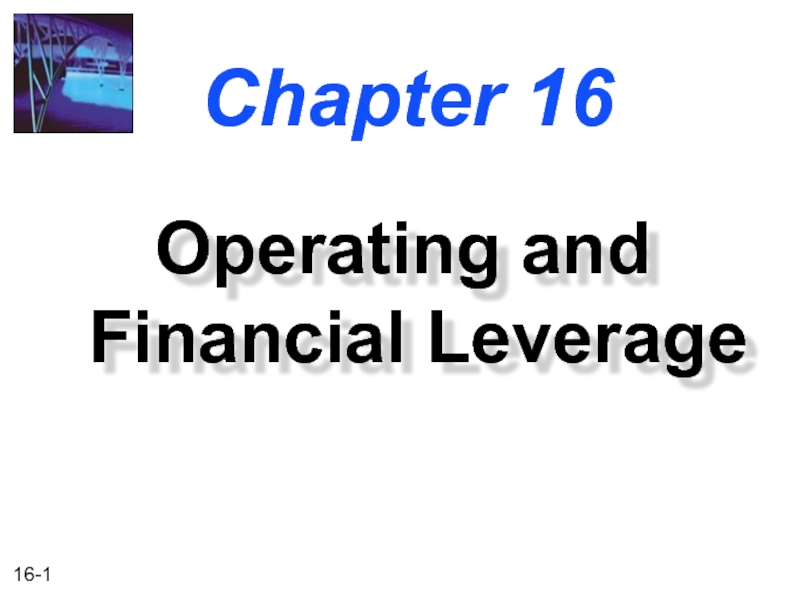
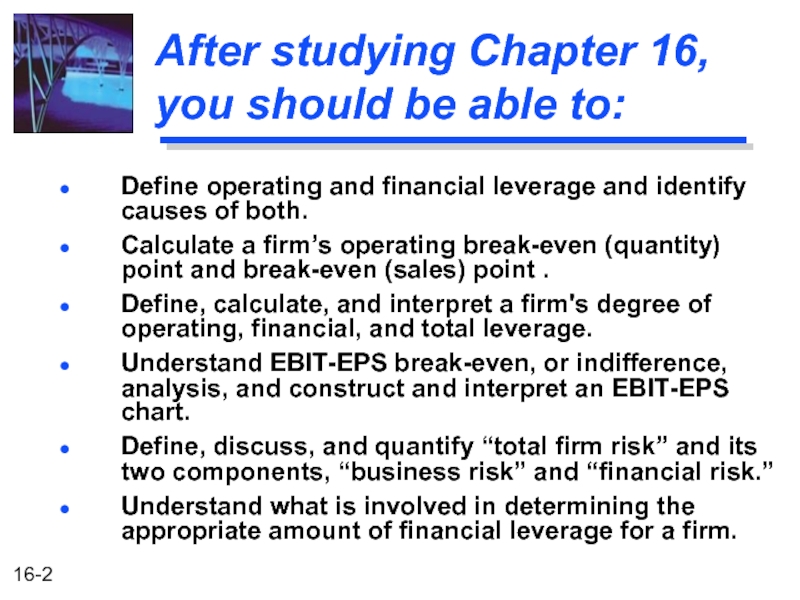
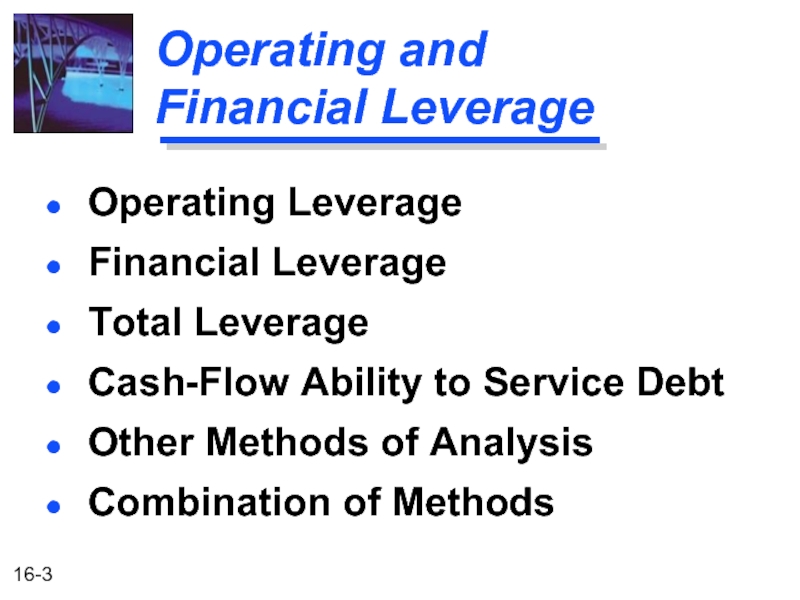
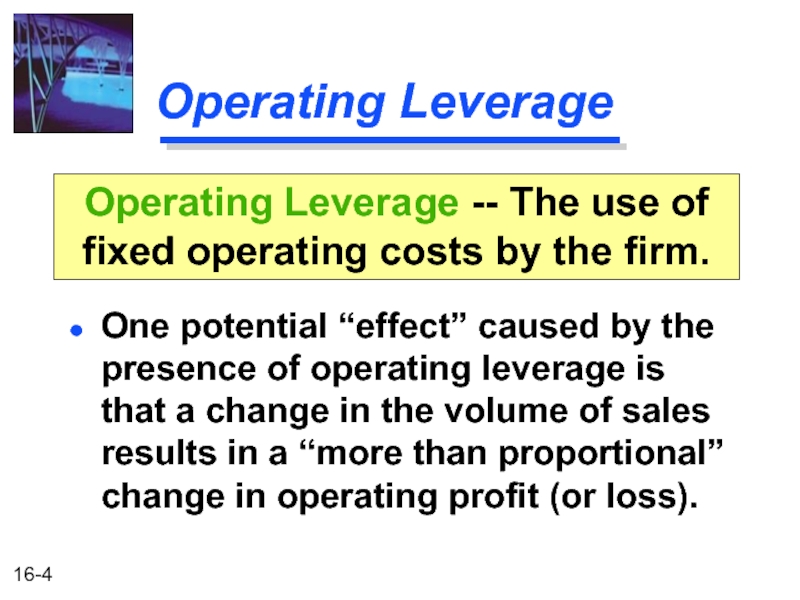
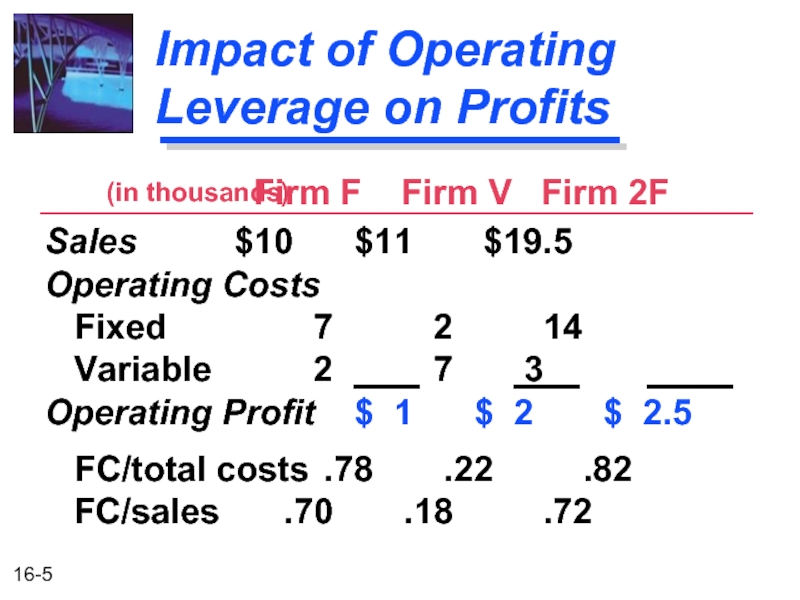
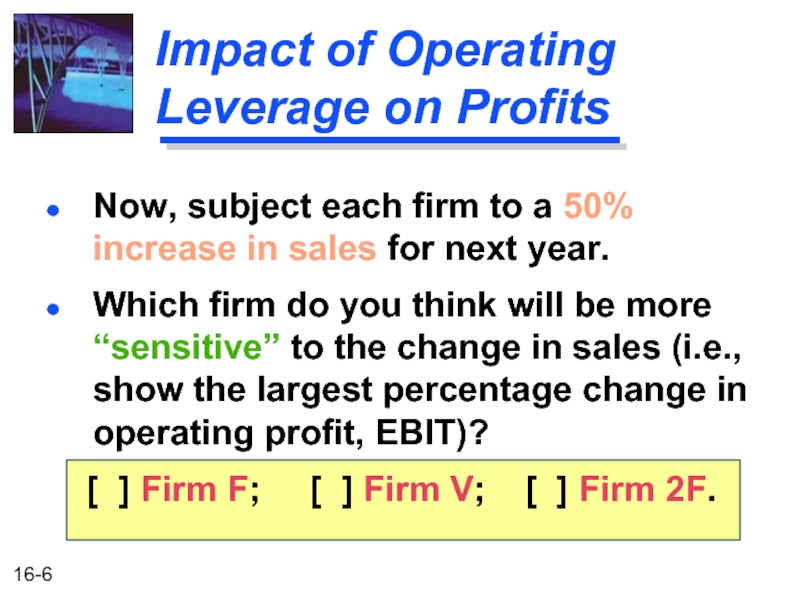
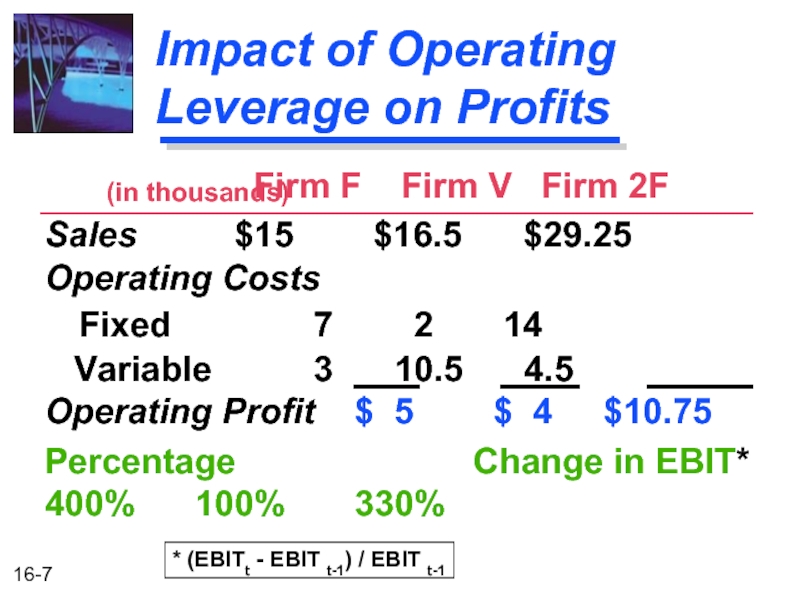
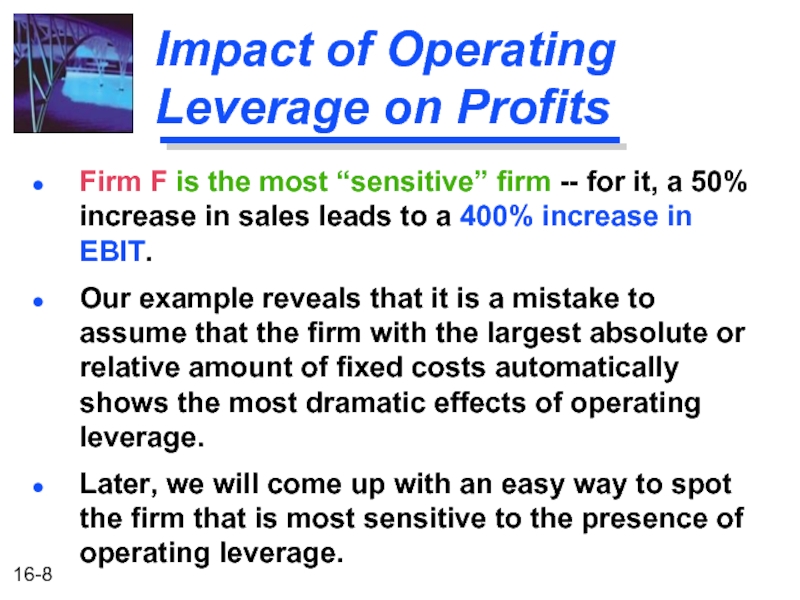
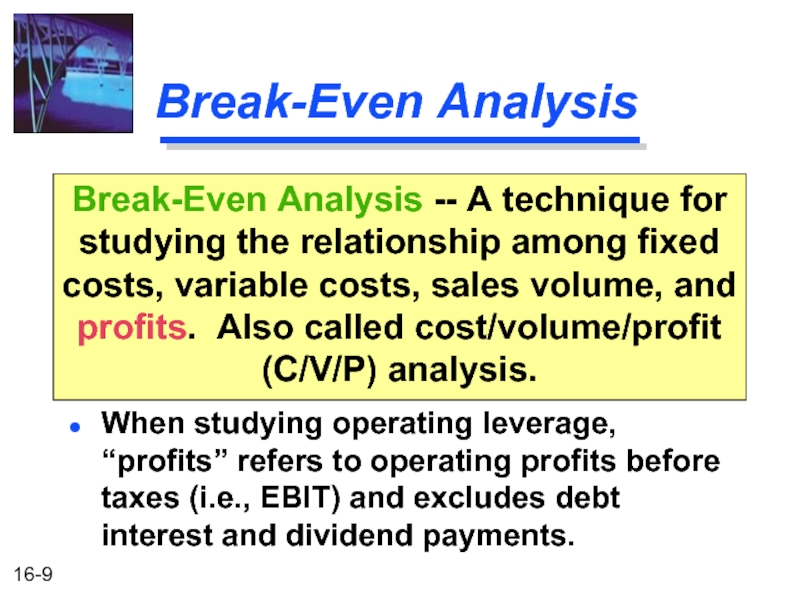
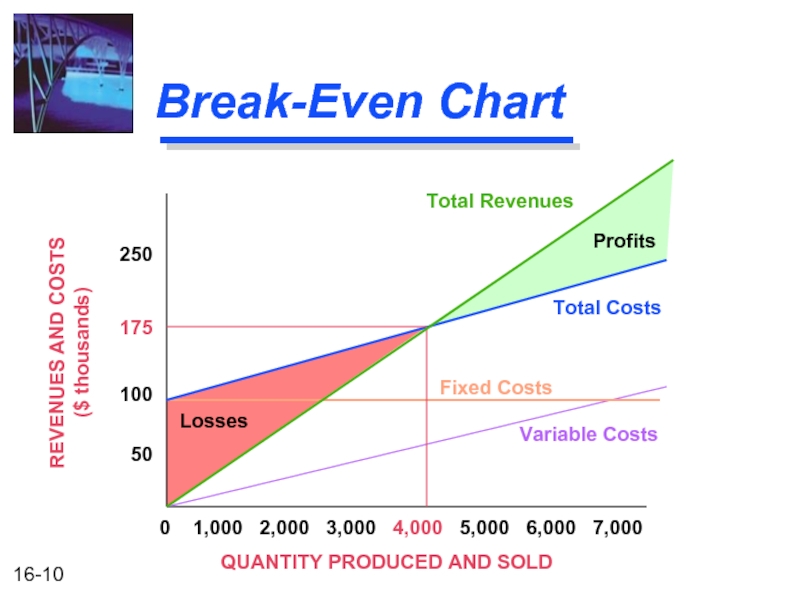
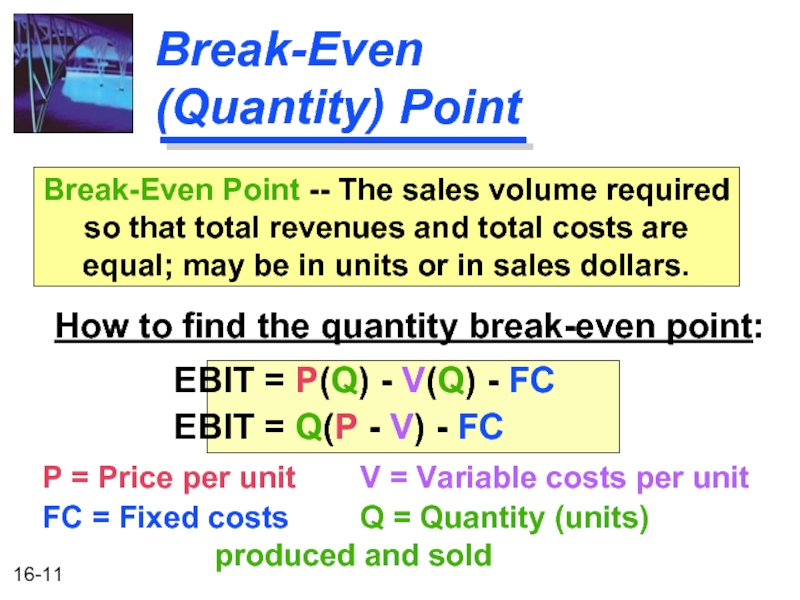
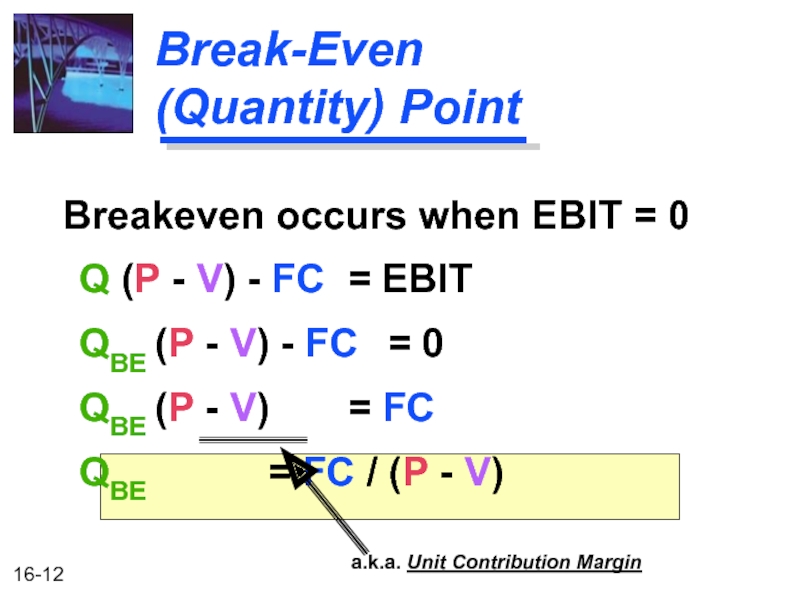
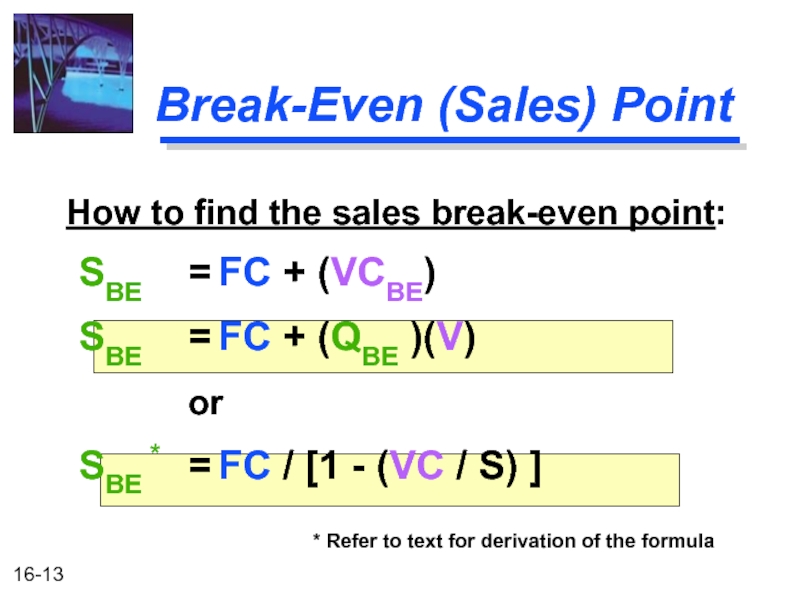
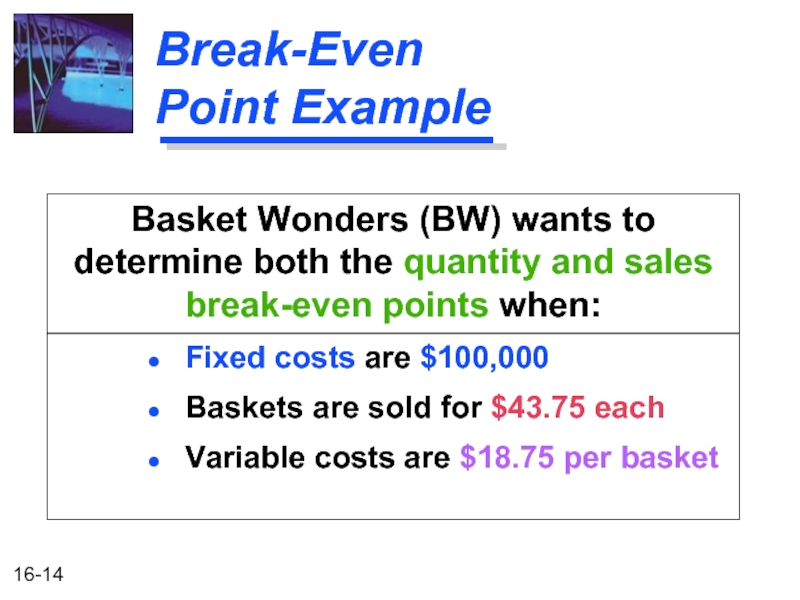
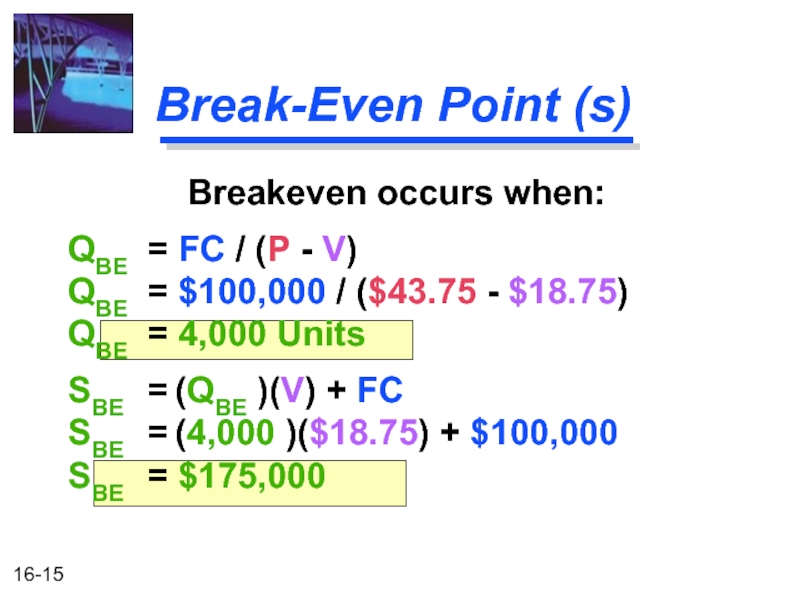
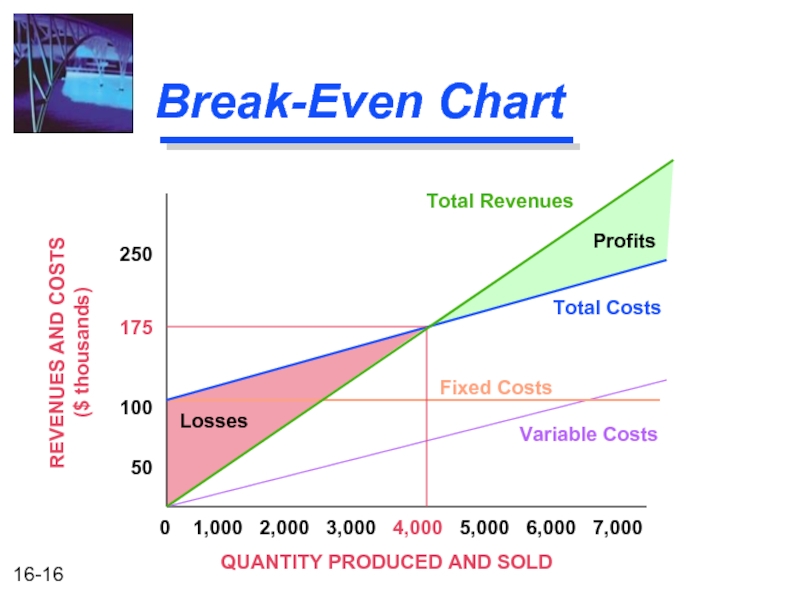
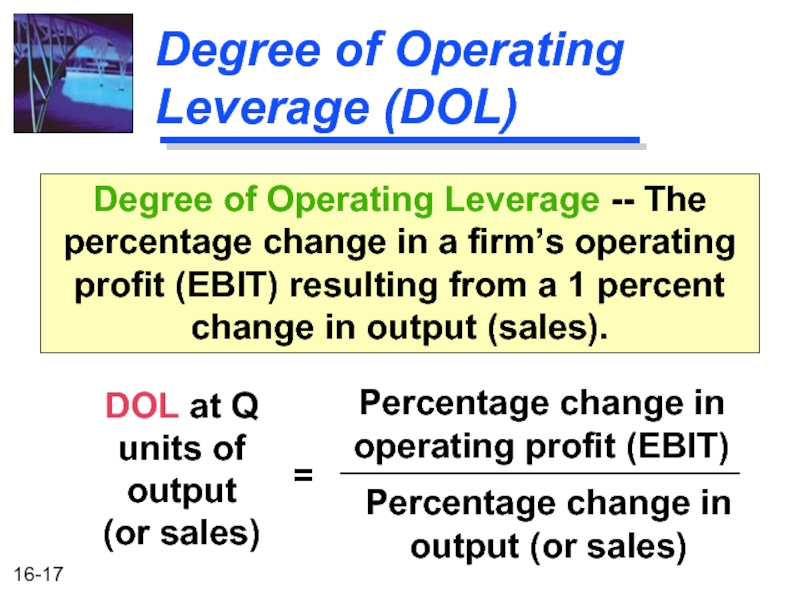
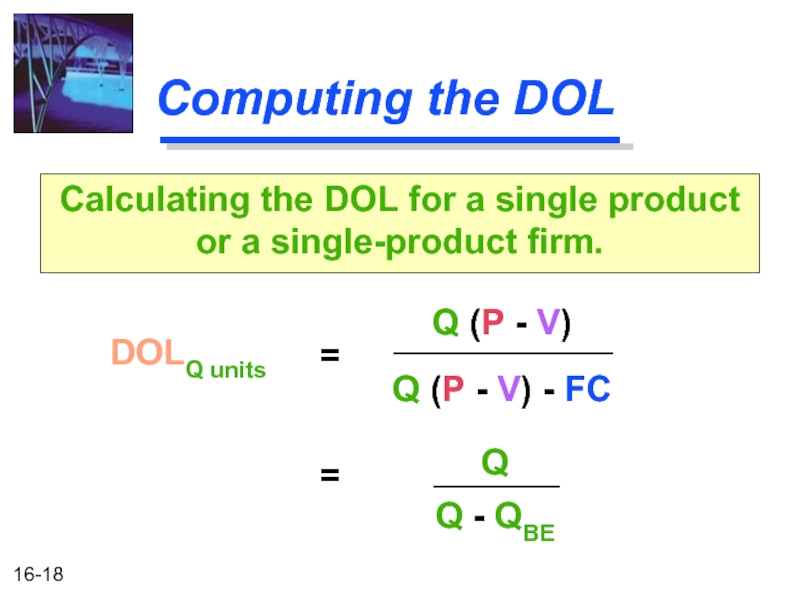
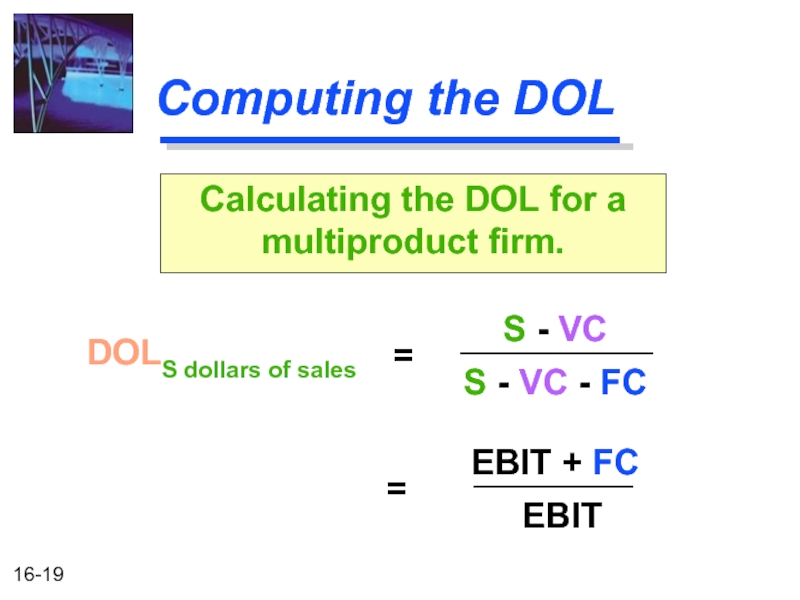
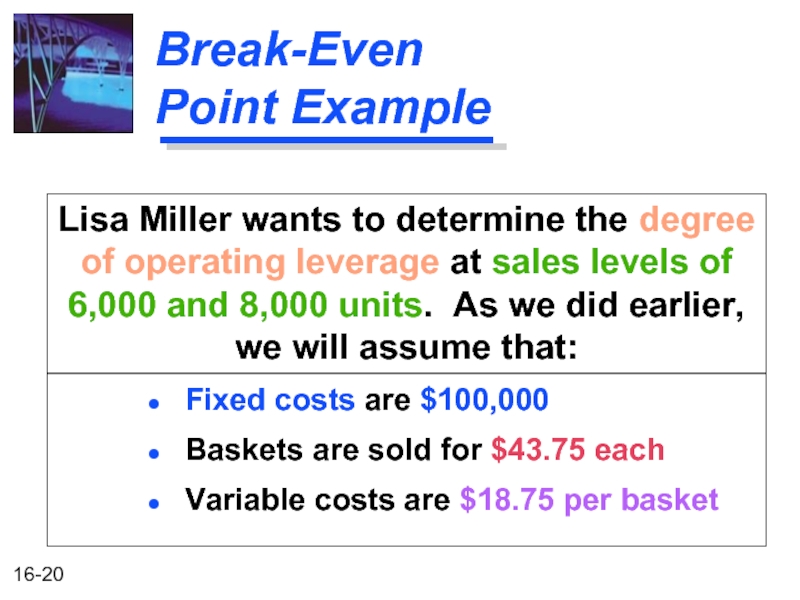
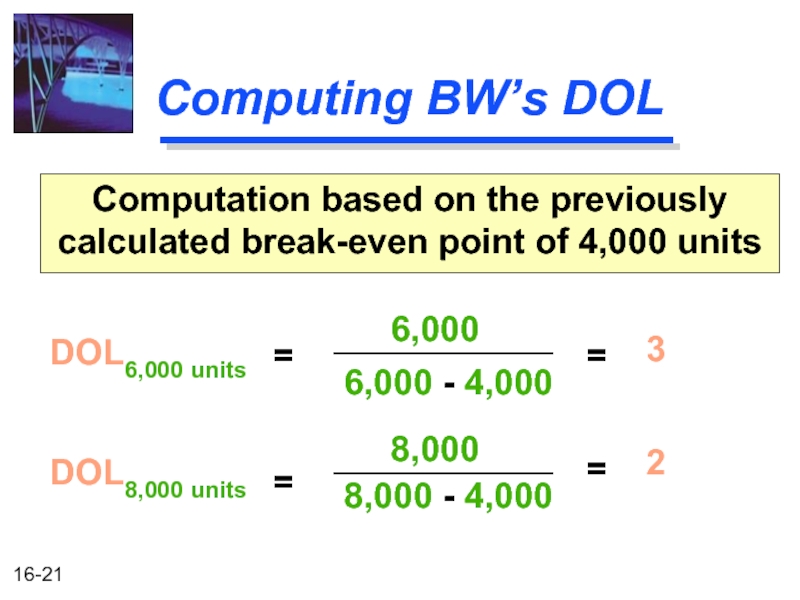
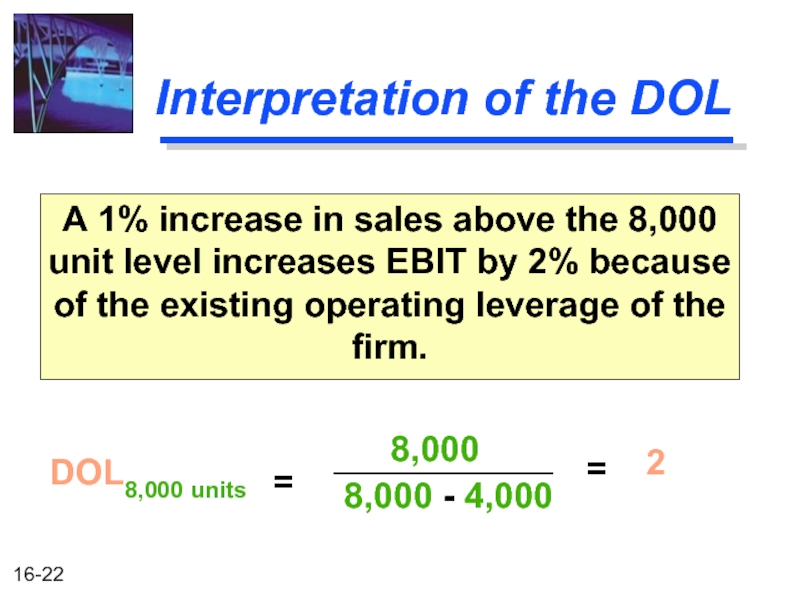
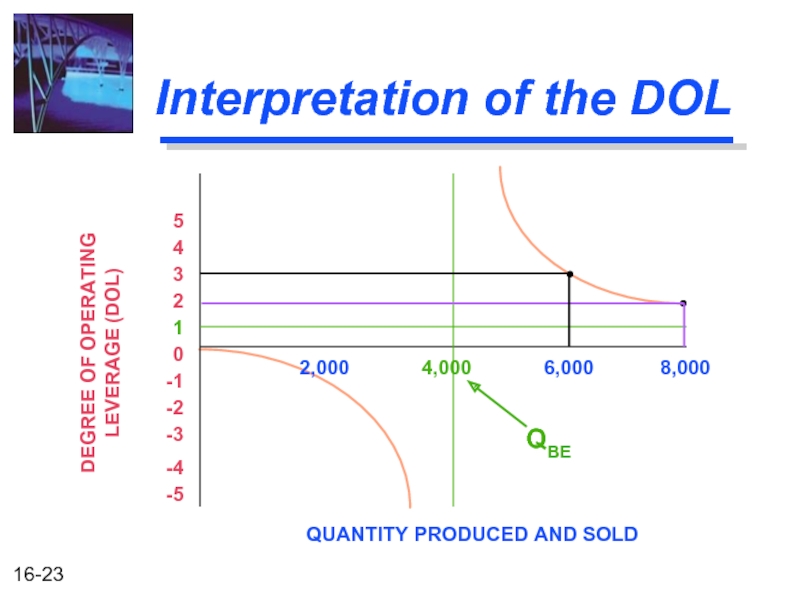
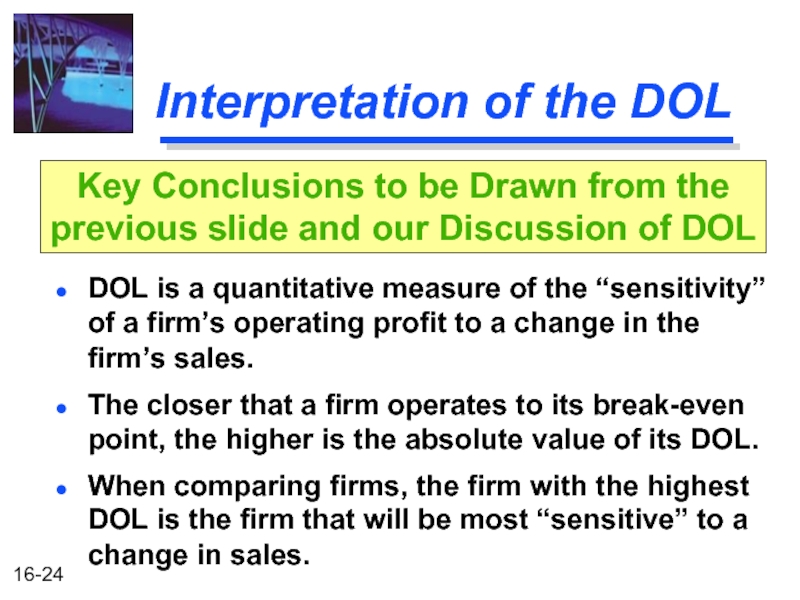
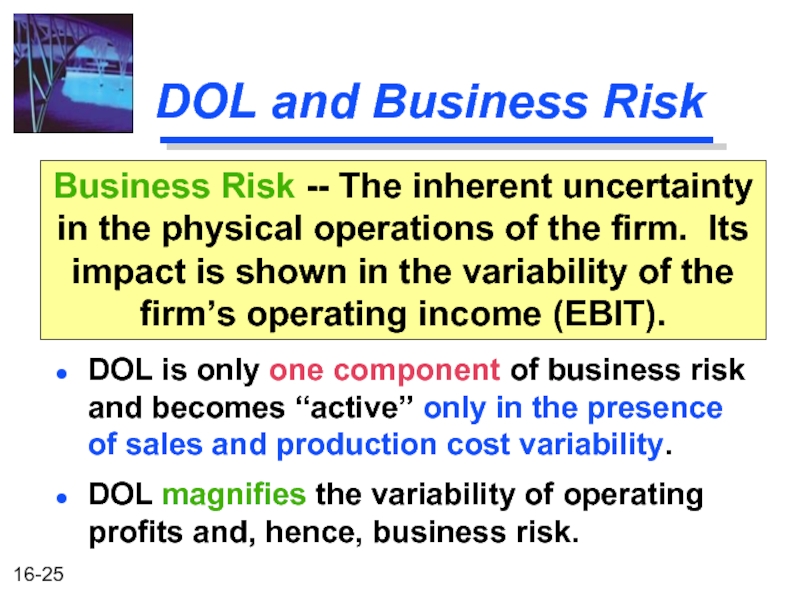
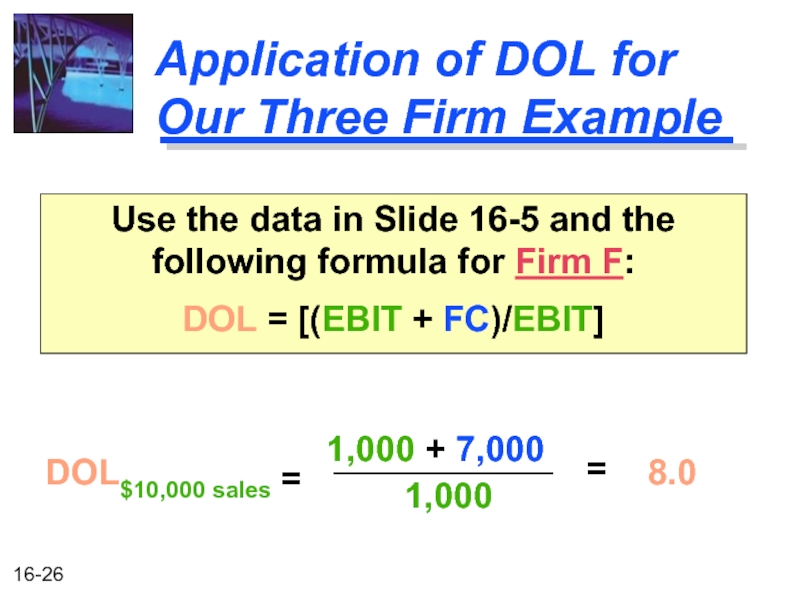
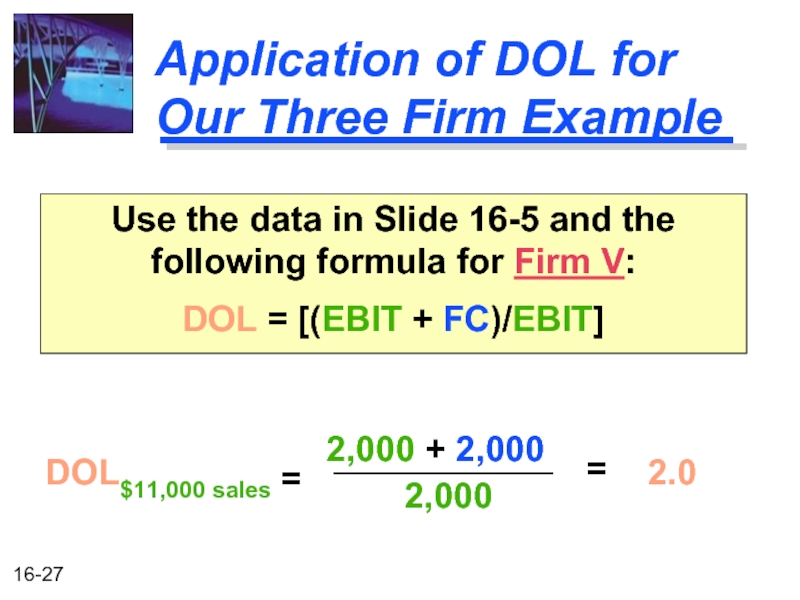
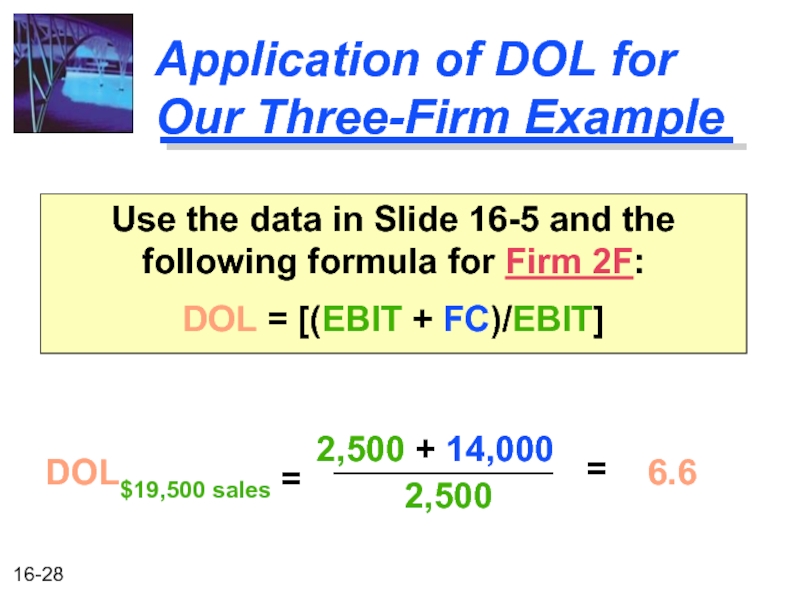
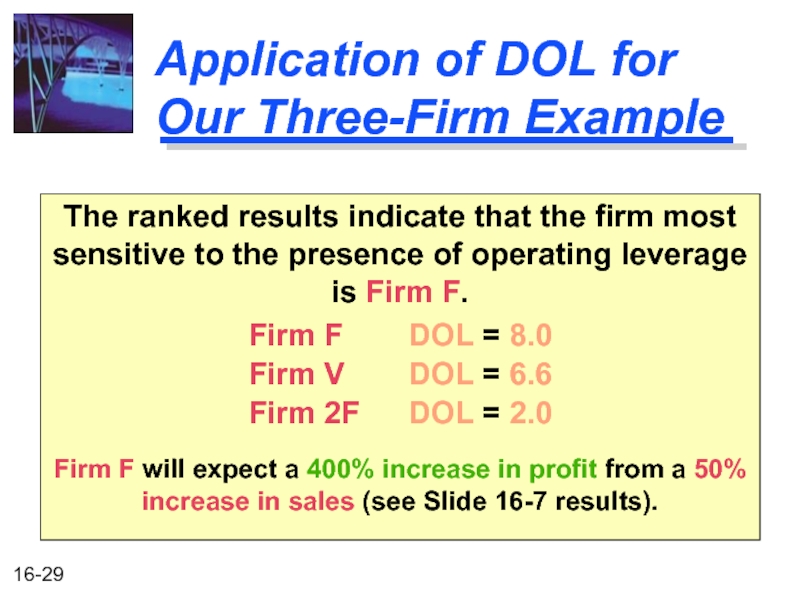
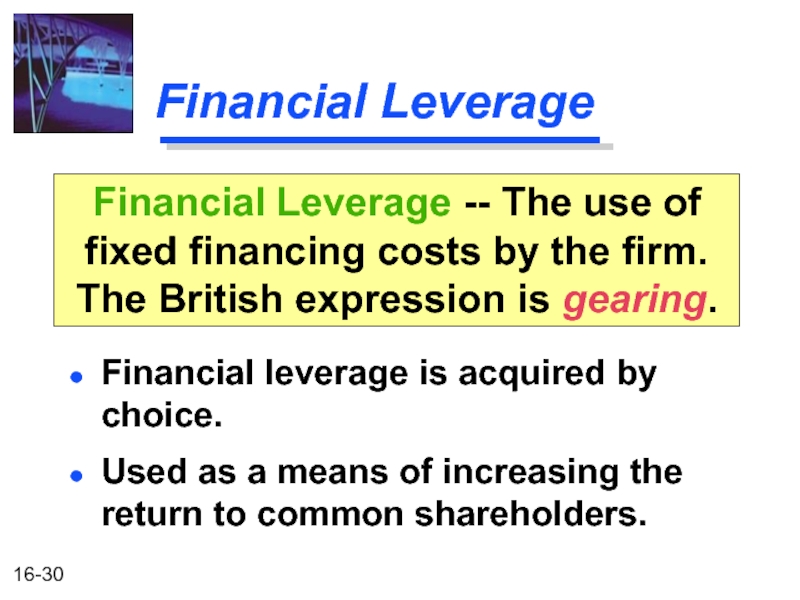
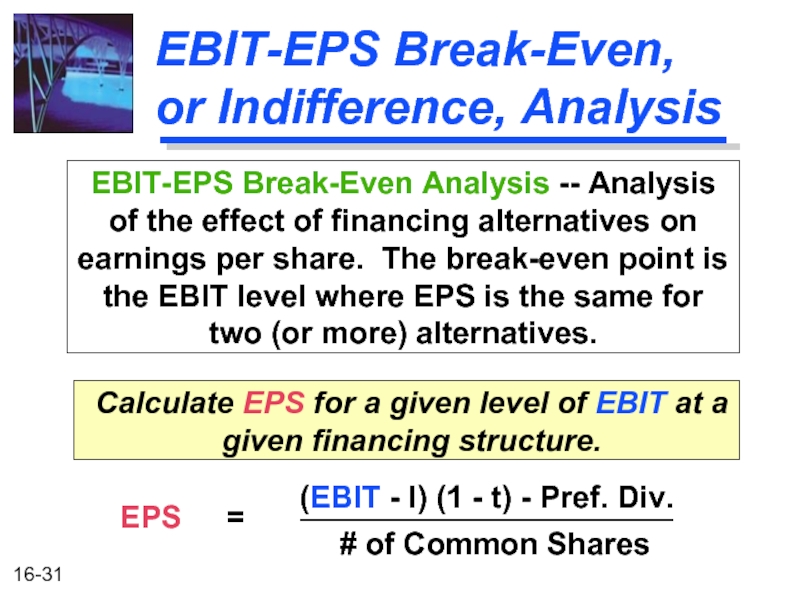
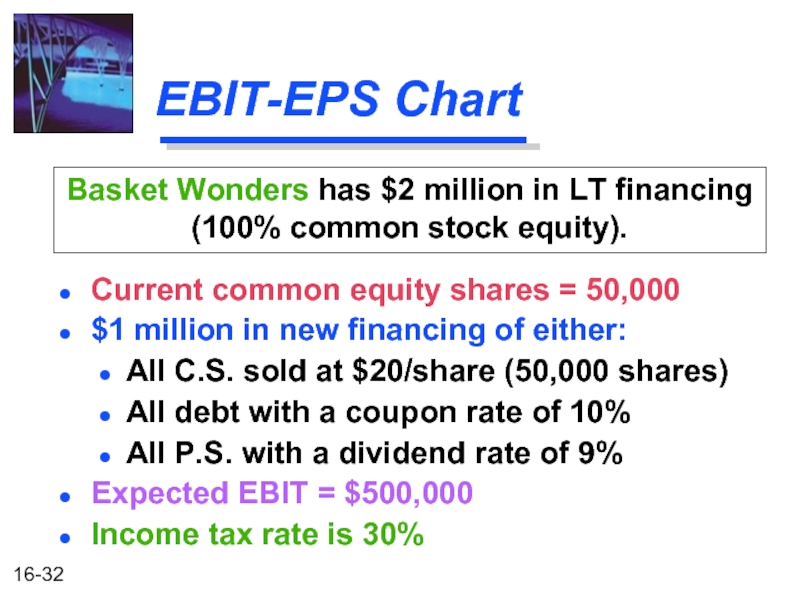
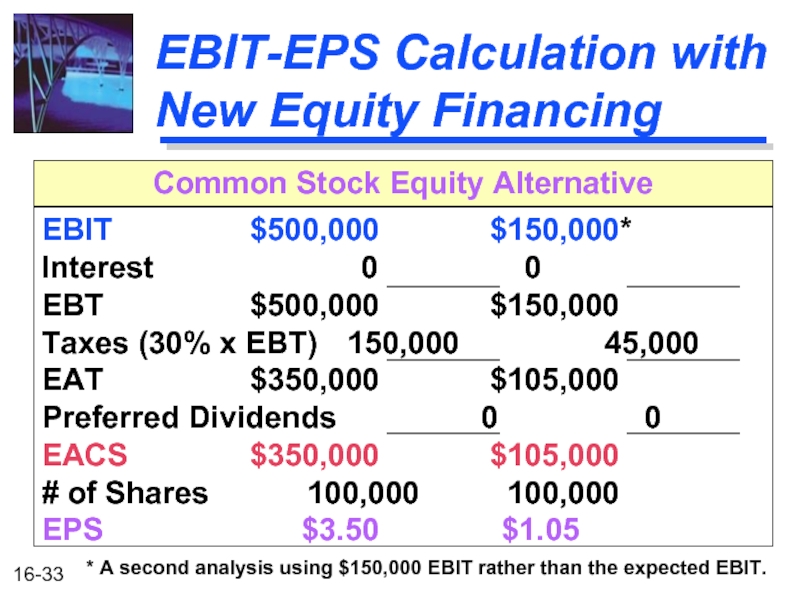
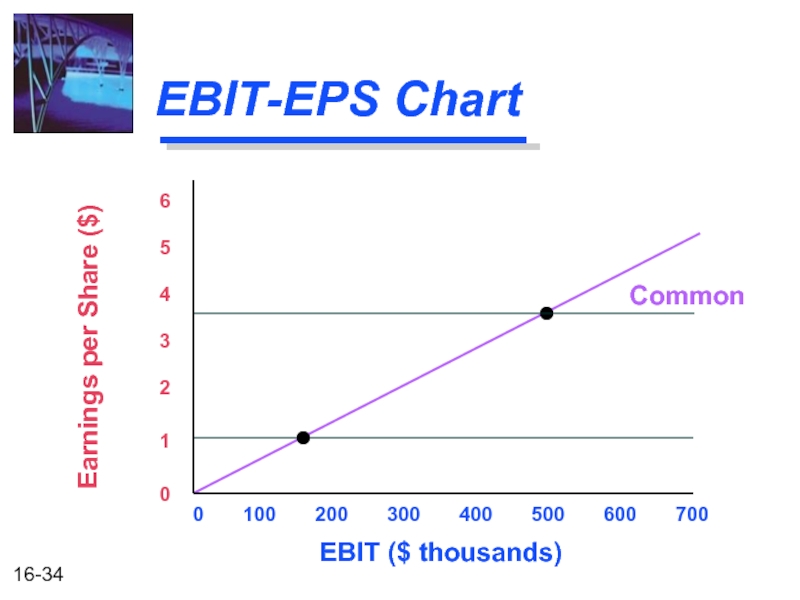
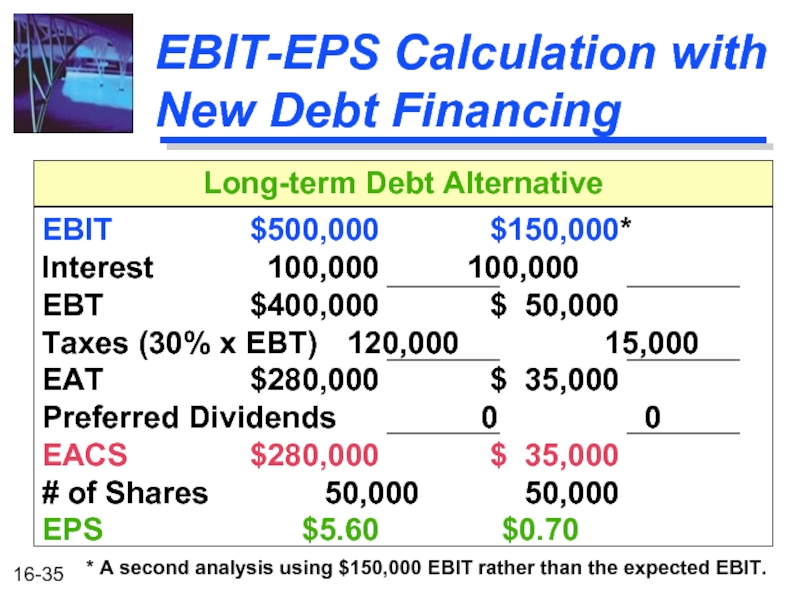
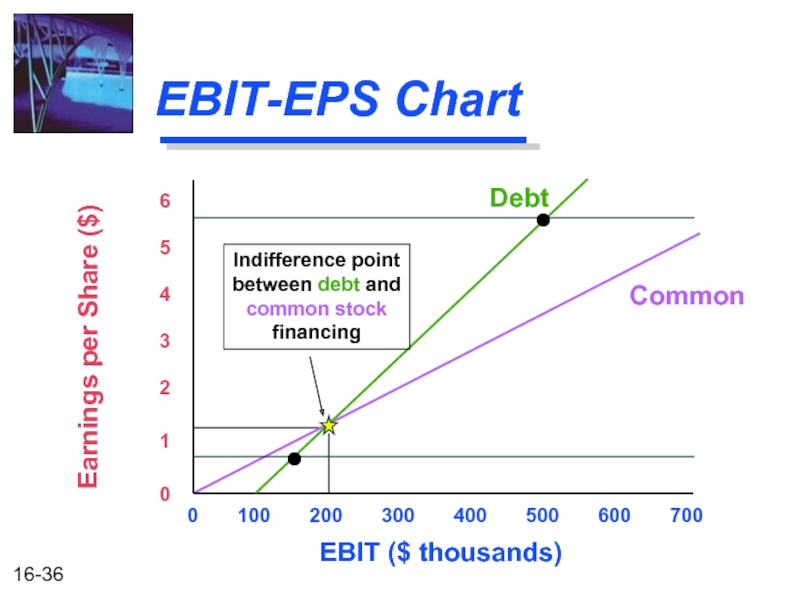
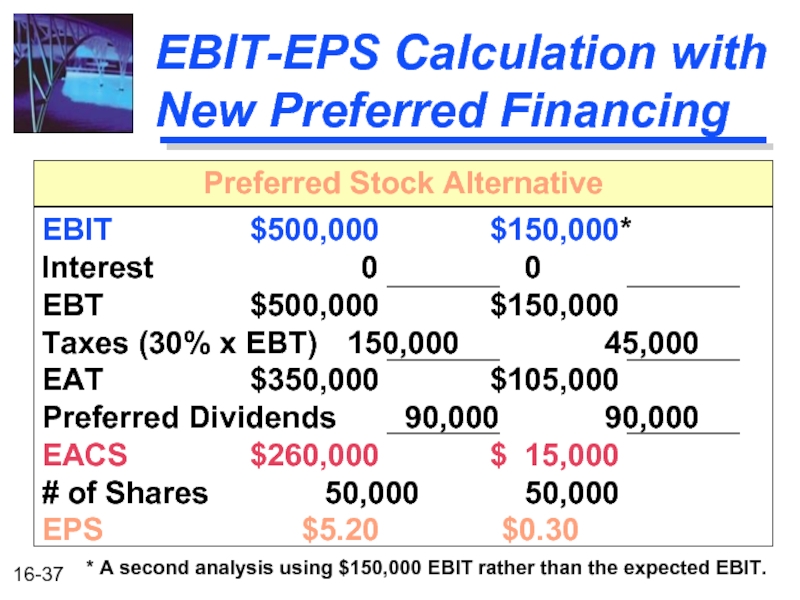
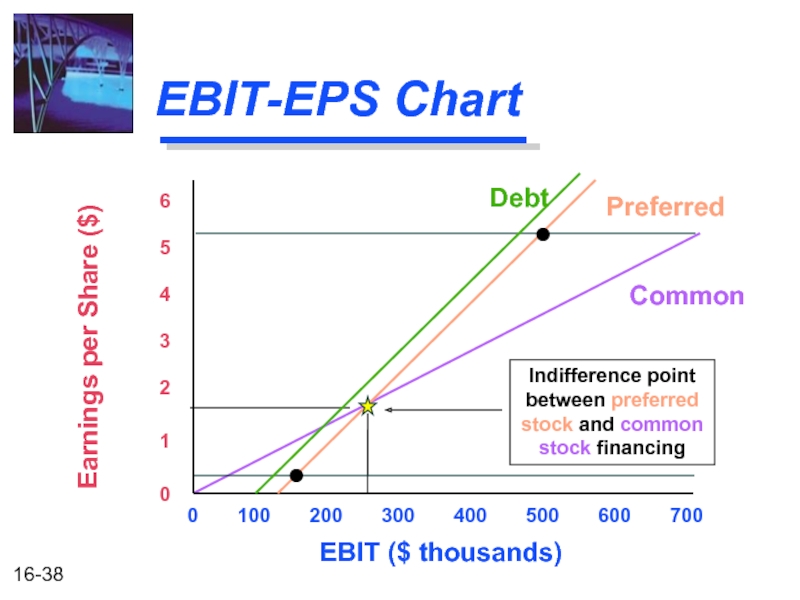
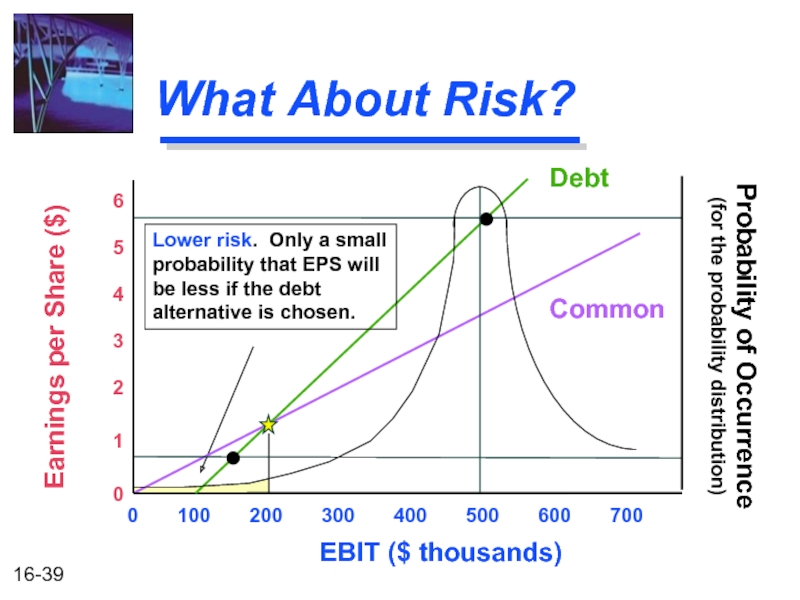
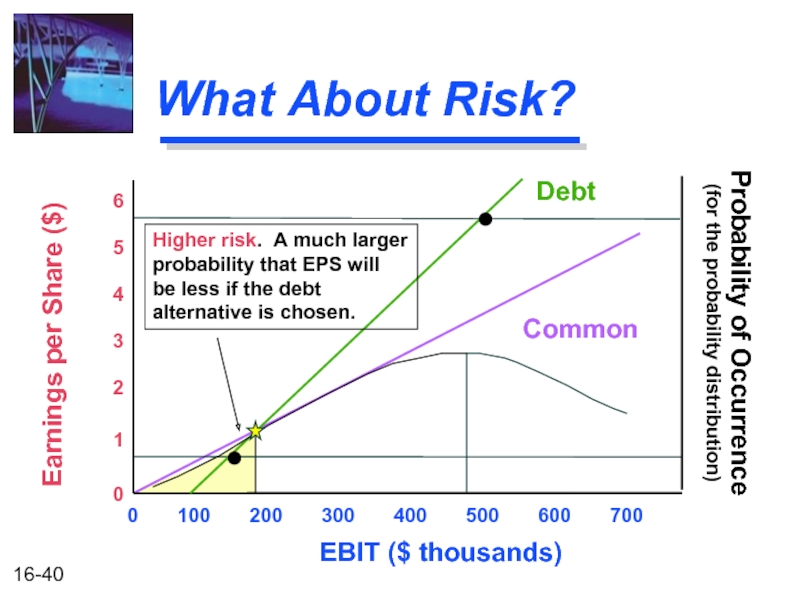
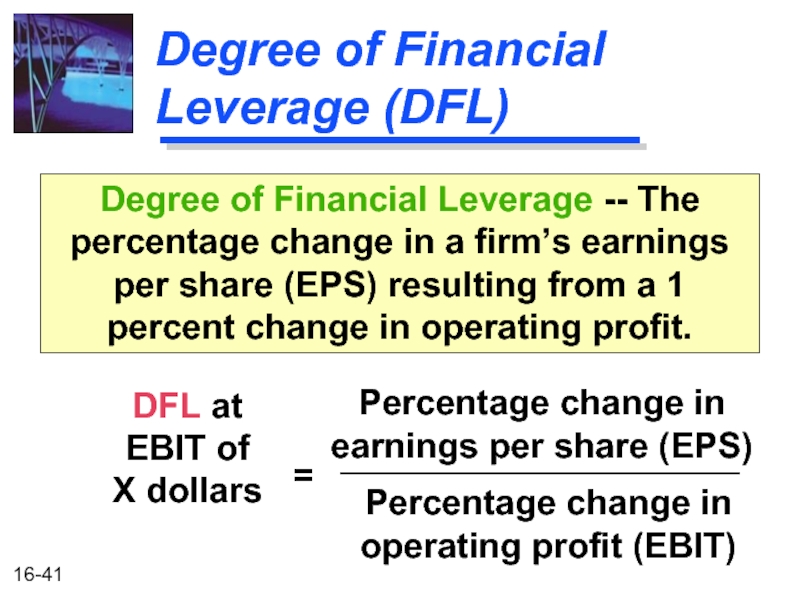
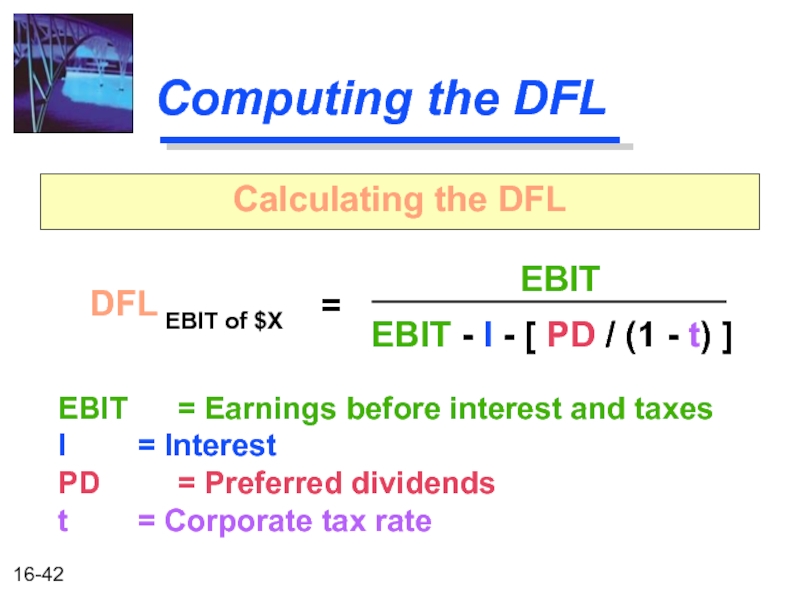
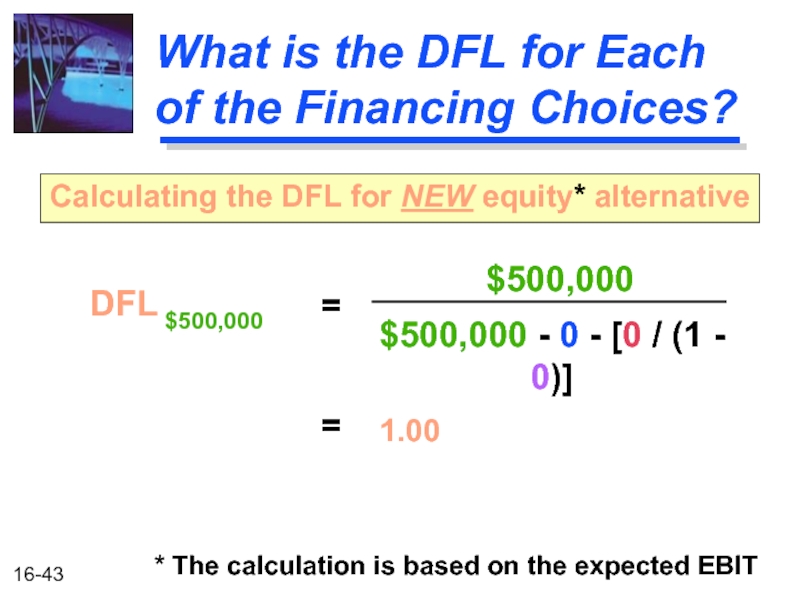
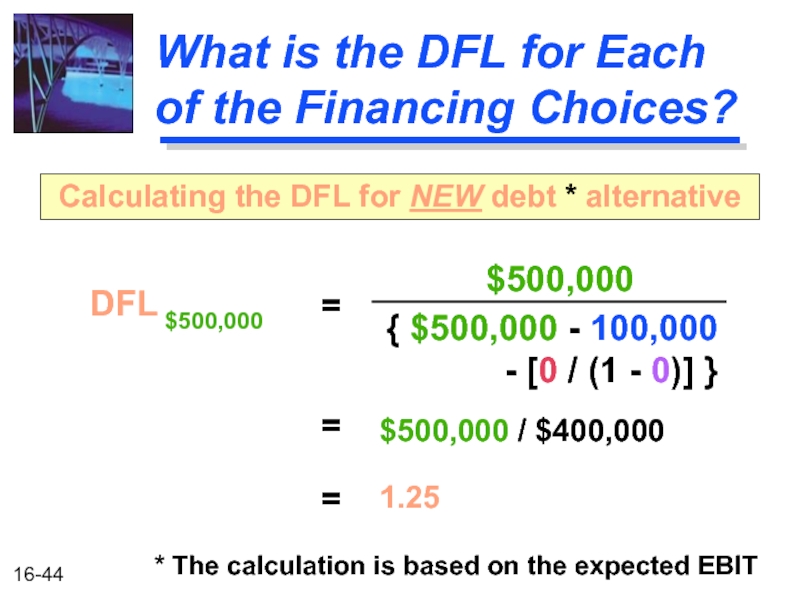
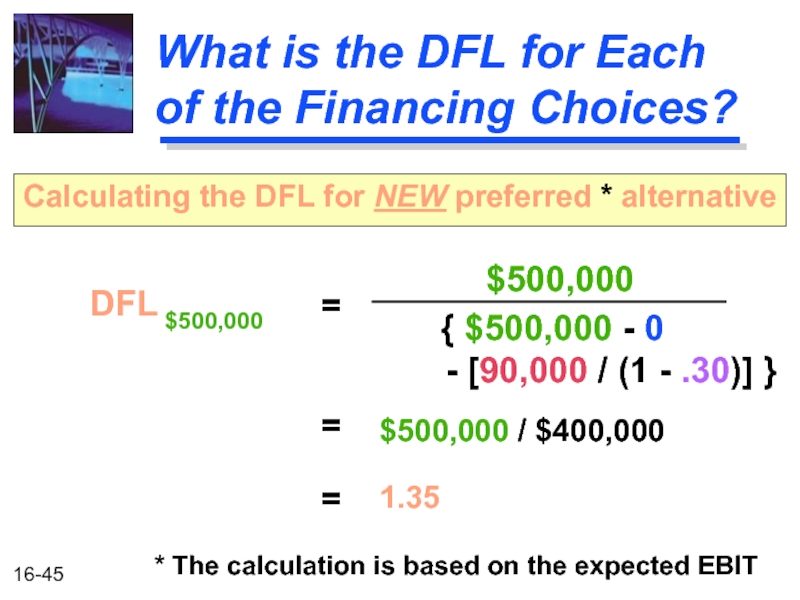
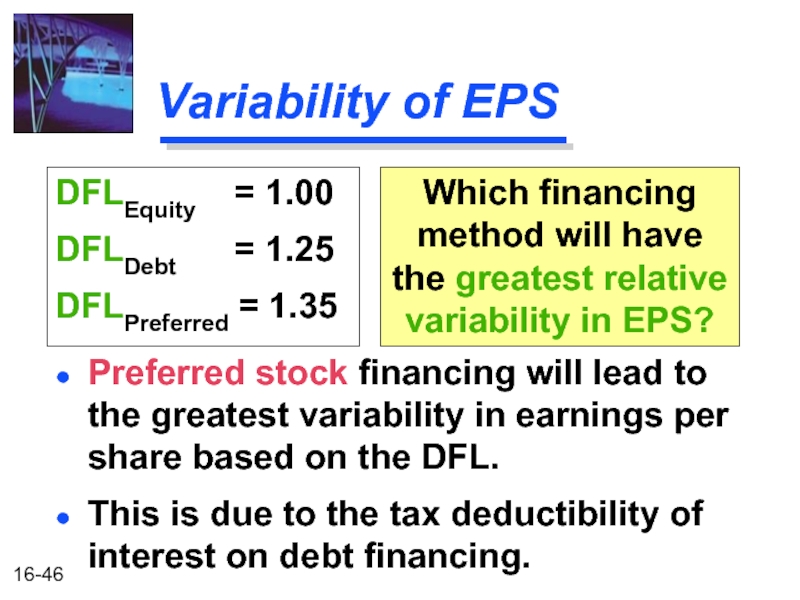
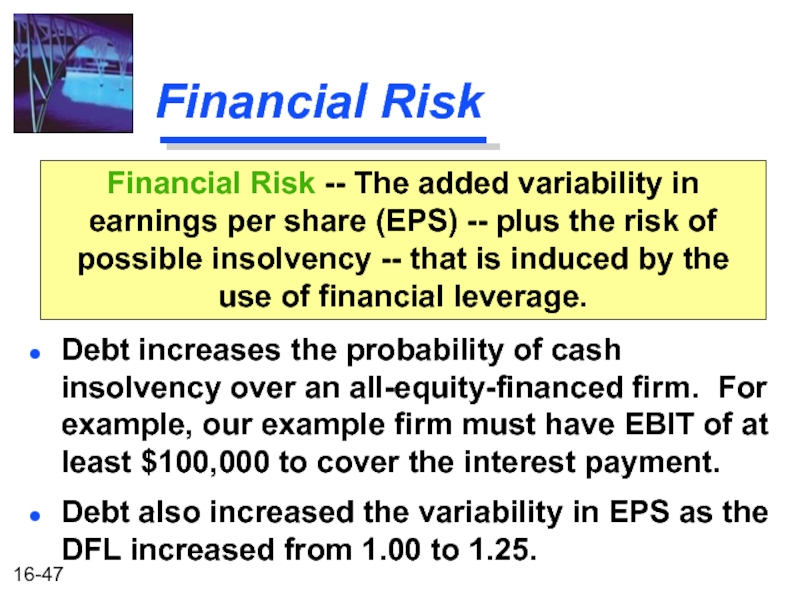
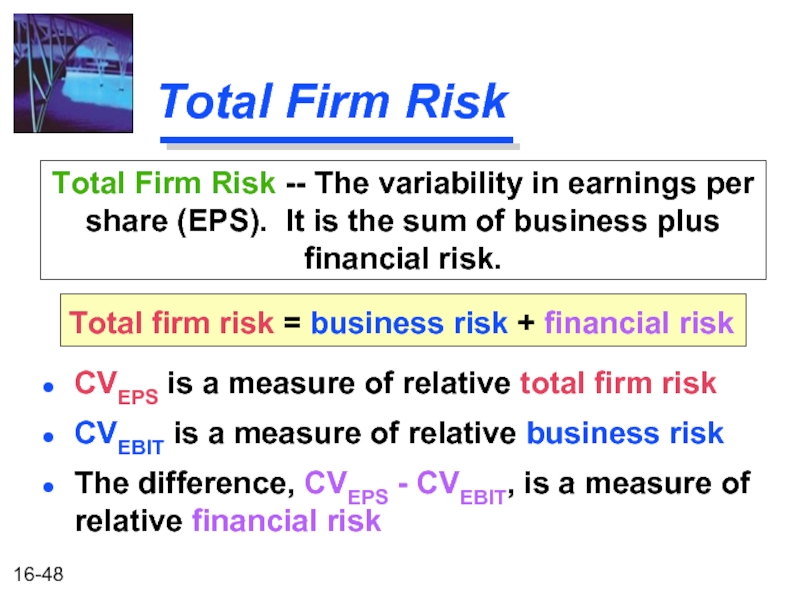
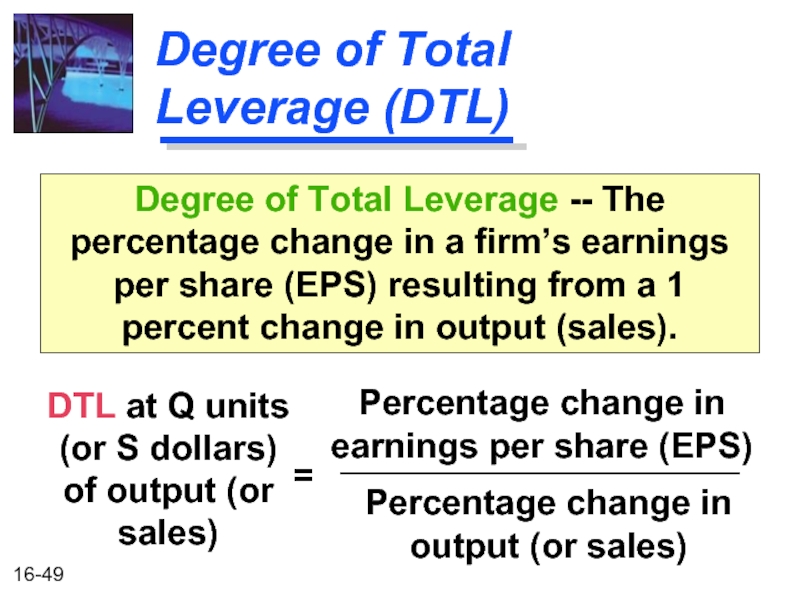
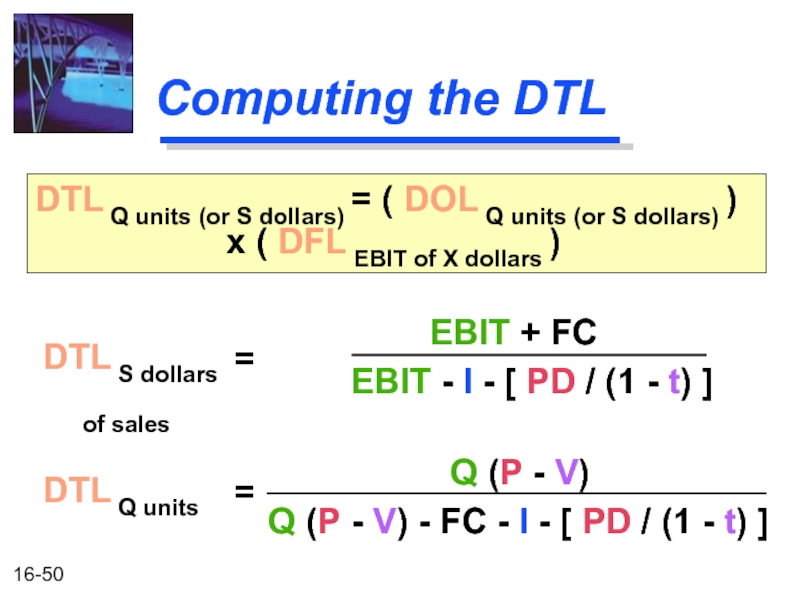
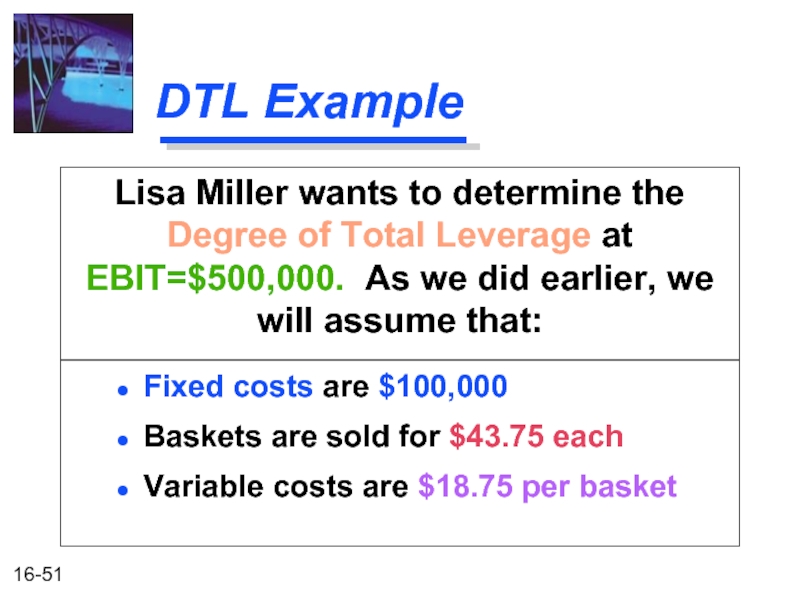
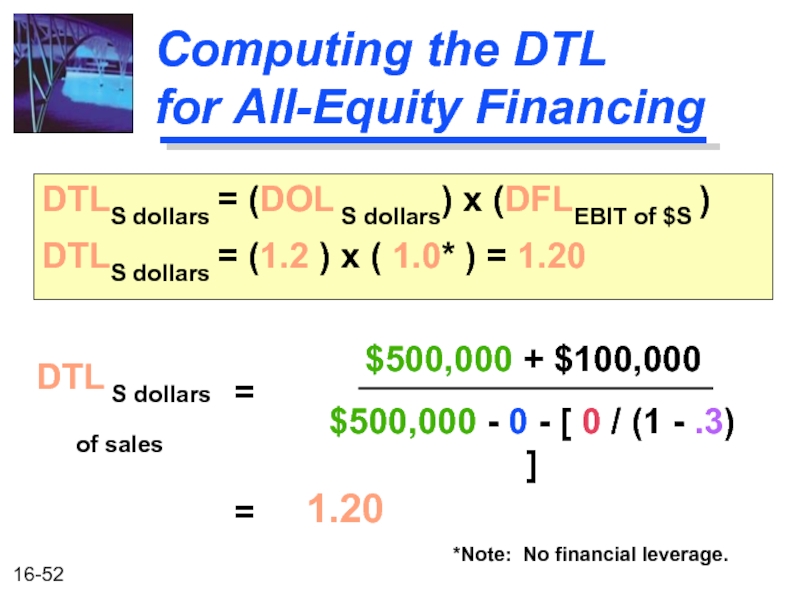
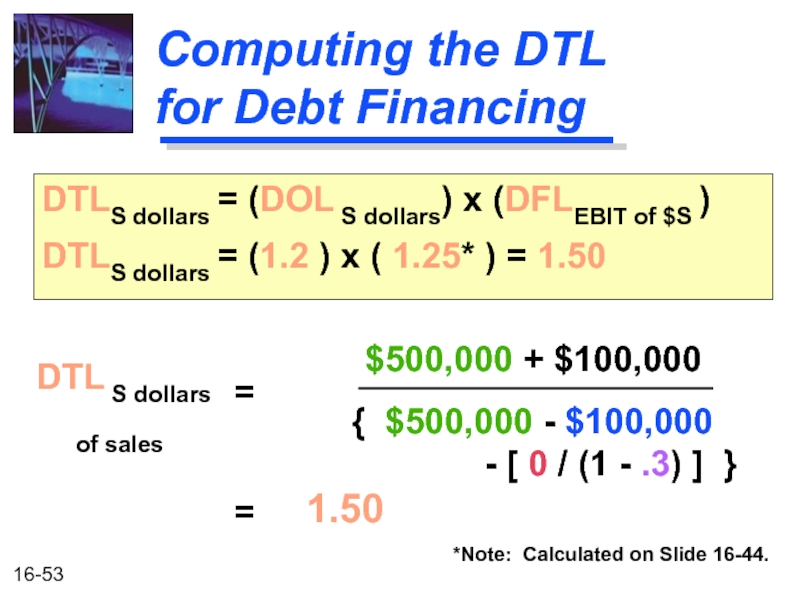
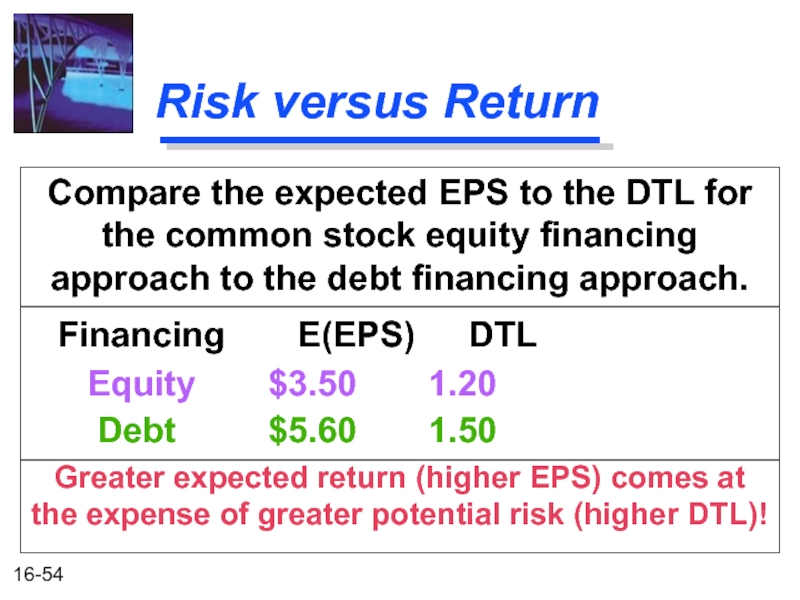
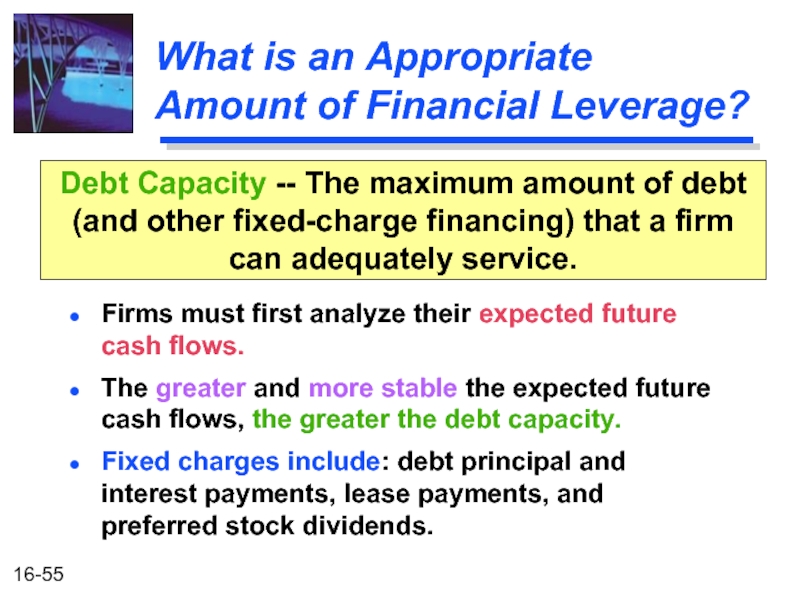
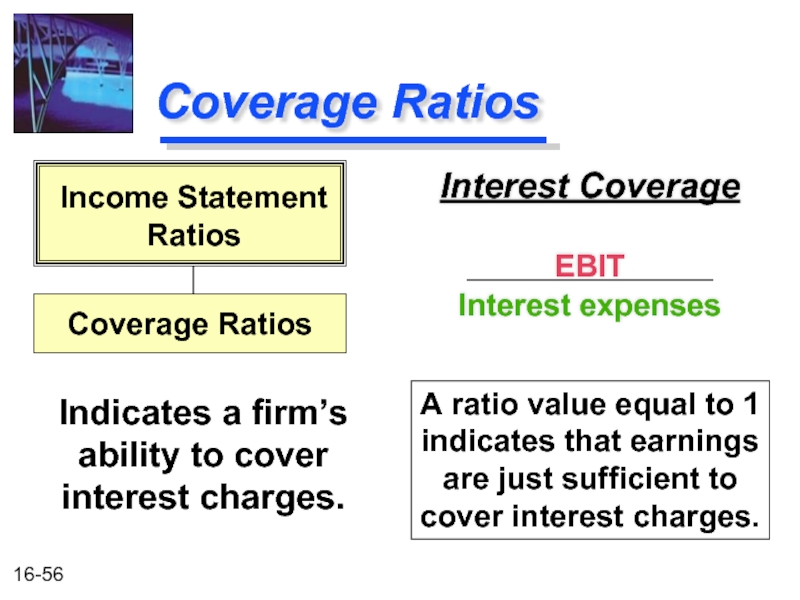
![Coverage RatiosDebt-service CoverageEBIT{ Interest expenses + [Principal payments / (1-t) ] }Indicates a firm’s ability](/img/tmb/1/73294/33bb950823c0f12c1294f3855a8f9722-800x.jpg)
